
The green hotels leading the way in ocean regeneration

We all have a responsibility nowadays to be aware of climate change, and while some of these issues can be overwhelming, we believe that knowledge and understanding is essential. Here we dive into the environmental issues and the solutions we can all focus on.

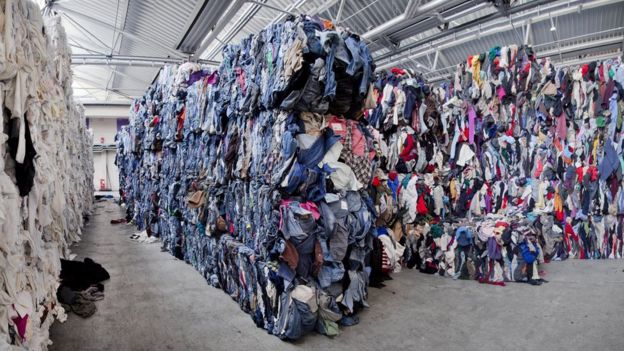

In response to growing demand, between 2015 and 2019, European production of this crop increased by 62%. It’s touted as a wonder plant that has impressive sustainability credentials alongside health benefits. Discover hemp, nature’s super plant.
Hemp has been grown for thousands of years for use of its fibre, seeds, and oil. Although it is a variety of the Cannabis sativa species, it contains very low levels of THC (a psychoactive compound found in marijuana.)
It is a hardy plant that can grow in a variety of climates, from Asia, Eurasia and Europe to Africa and the Americas. Once it has been harvested, hemp leaves are dried and then the fibres are extracted and used to make textiles and other materials.
Hemp also touts quite a few sustainability credentials. It can be grown without the use of pesticides and herbicides, as it lacks natural predators, making its cultivation chemical free. The plant also has deep roots which help to aerate and loosen soil, as well as being a natural soil cover, preventing soil erosion. Hemp is also pretty great at carbon storage — one hectare can sequester 9 to 15 tonnes of CO2 — similar to that of a young forest.
The possibilities of hemp go far beyond its use in clothing. From skincare to construction, Hemp is a key ingredient in a host of exciting innovations. There is an abundance of reasons why we should use hemp over other materials. It is a natural, biodegradable resource which could replace materials such as cotton, or blended with other fibres to replace denim and jersey. For a long time, hemp clothing was seen as scratchy and uncomfortable, but this is a myth, and the fabric is actually suitable for even sensitive skin types.
The seeds from hemp plants can also be eaten raw or used in a variety of foods such as cereal, granola bars, and hemp milk. These seeds are what’s known as a complete protein, providing all the essential amino acids, and also include high amounts of essential fatty acids.
In the world of construction, Hempcrete is gaining momentum as a sustainable building material. It’s made from a mixture of hemp hurd (the woody core of the hemp plant), lime, and water and is lightweight and durable, with excellent insulation properties. You can learn more about Hempcrete in our podcast interview with the founder, Steve Barron, here. There are also explorations into the use of hemp fibres as a component in batteries, leading to more sustainable energy solutions.
Hemp could also be used to reduce our reliance on fossil fuels, because it grows so fast, even on infertile soil, it’s under consideration for use in sustainable fuel. Composite bioplastics are another use for hemp, creating a plastic made from a combination of hemp and other plant sources.
This multi-hyphenate plant is also becoming popular in the health and beauty industry. Hemp oil, which is extracted from the seeds of the hemp plant, is rich in essential fatty acids and antioxidants, making it a popular ingredient in skincare products, helping to moisturise the skin, reduce inflammation, and soothe irritation. Hempseed oil and CBD oil, although derived from the same plant, are not the same thing. The former comes from the seeds, and the latter comes from the flowers, leaves, and stems. CBD oil has been proven to have a wide variety of lifestyle and health impacts from improving sleep, digestion, mood and immune function.
The rising popularity of Hemp across a range of industries shows provides a promising blueprint of how to make the most of natural, renewable materials. To experience the heck out three brands using this unique material below.
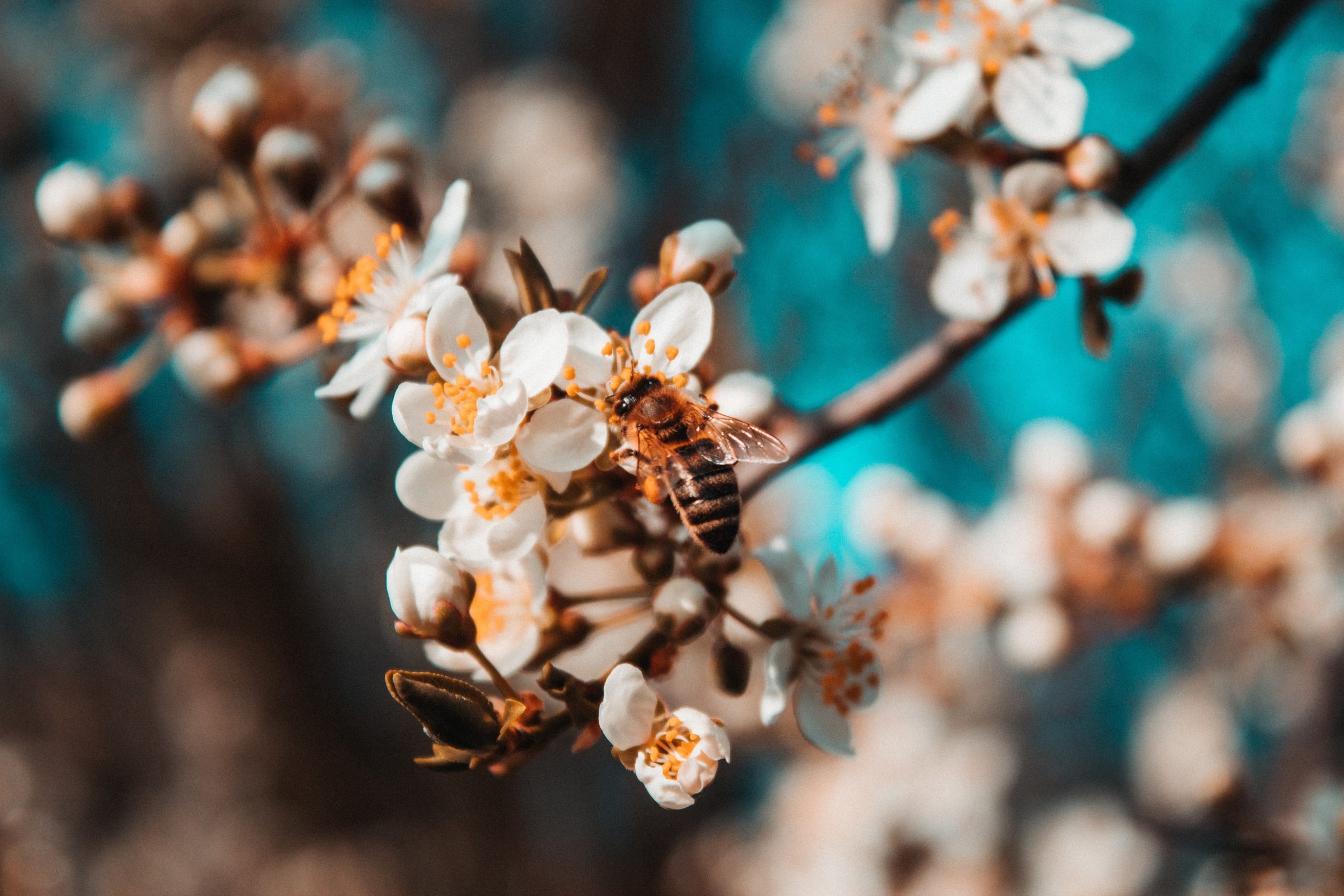
Aside from their fascinating social structure (many bees are ‘eusocial’, meaning each individual plays a role within a colony, which itself could be seen as a living individual), bees play a vital role in the continuing existence of humans. They pollinate around a third of the food we eat (although the exact figure is hotly debated), many of the crops that make our clothes, and those used for feeding livestock. Out of the 400 different types of plants grown for human consumption, bees play some role in the yield and quality of 84%. As a result, it’s estimated that annually, bees contribute $170bn worth of crop pollination around the world – vital with our ever-growing population in need of food. Economically speaking, beekeeping can be an important sustainable and alternative source of income in rural areas, benefiting communities living in and around forests.
Unsurprisingly, bees provide services to ecosystems beyond this anthropocentric viewpoint too. They have evolved to be highly efficient pollinators of a huge variety of trees and other plants, vital for nature’s biodiversity. Bees visit plants for their food, nectar and pollen and have evolved to do so while also (usually) benefitting the plant they are visiting. Their bodies are covered in hairs to trap nectar and pollen, which they can do so year-round (climate dependent), so long as there are flowers available. Their co-evolution over millions of years has led to symbiotic relationships as old as each species – nectar and pollen from flowering plants are bees’ only food source – nectar for energy and pollen for baby food – and bees a primary pollinator for many plants. Bees also act as indicators of the state of the environment. Their presence or absence tells us of the current health of that ecosystem.

Because of all of this, there has been an increase in awareness-raising for the plight of bees. In the six years leading up to 2013, more than 10 million honey bee colonies across the world were lost, often to Colony Collapse Disorder, where bees abandon their hives, leaving the queen and young to fend for themselves. Although the full cause of CCD has not yet been established, evidence points towards the use of Neonicotinoids, pesticides brought in to replace other banned pesticides. Inevitably following CCD the hives die out, although mercifully farmers are able to restock honeybee numbers each year. The same cannot be said for less blatantly economically beneficial species, such as solitary bees, which make up the vast majority of bee species. Of these, around 1 in 10 face extinction as a result of intensive farming, insecticide use and climate change. The habitats they depend on for nesting sites and foraging are rapidly diminishing due to urbanisation – since 1945, 97% of wildflower meadows in the UK have vanished – leaving precious few refuges for them to bounce back.
Rachel Carson’s book, Silent Spring, was published nearly 60 years ago. It’s credited with catalysing the environmental movement in the US and UK, after documenting the devastating effects for bee populations of indiscriminate use of pesticides such as DDT on crops. In 1972 the EPA banned DDT and it is now classified as a probable human carcinogen. And yet, 60 years on, there is still a constant battle between agricultural industry, and environmental organisations. Following the banning of DDT, new pesticides have been introduced – such as the Neonicotinoids that contribute to CCD – and many subsequently banned. Who’d have thought that removing the base of the food chain would cause everything above to collapse? Despite decades of proving that the indiscriminate wiping out of large swathes of the food chain is harmful to the whole ecosystem, the battle between industry and nature continues.
One of the best things we can do to promote bee-friendly growing techniques is to buy organic. According to the Soil Association, plant, insect and bird life is 50% more abundant of organic farms. By supporting these farms, you’re supporting the expansion of organic farming practices, thus helping bee populations further afield.
Reducing the frequency of mowing, and planting native flowers can massively benefit bee populations. You don’t need a lot of space either – window boxes of flowers and un-mown patches of lawn all provide shelter and food sources for multiple different species. Aim to have flowers that bloom year round – grow snowdrops, crocuses and daffodils for early spring feasts and cyclamen, dahlias and begonias for autumn stockpiling. Look for wildflower seed mixes. They’re tough to grow but in the right conditions provide the most benefits for our pollinators.
While honeybees require large hives to thrive in, the majority of bee species require much less space. Create a bee hotel to allow them to nest and rest, or build a rock garden. Many bee habitats are considered ‘messy’ to most gardeners, but by maintaining some areas of the garden undisturbed, the nooks and crannies can act as warm shelters for the local solitary bees.
As tempting as it may be, using herbicides and pesticides can significantly harm bee populations, as well as everything further up the food chain, such as your garden birds. Mulch around the base of trees and on bare earth – not only will this suppress weeds, it’ll also provide nutrients to your plants, and nesting sites for overwintering insects! Look into ‘companion planting’ – planting more attractive or naturally repellent plants between your crops, to attract or repel unwanted insects.
Honeybees are not the be all and end all of the bee population in the UK or further afield. However, buying local honey supports local bees pollinating plants in your local area – a win win for the environment and the beekeepers. Purchasing from small businesses also protects against mass production of supermarket-bought, pollen-free ‘honey’, often packed with artificial sweeteners such as high-fructose corn syrup. If you eat honey, make sure it’s from local hives.
“But man is a part of nature, and his war against nature is inevitably a war against himself.”
― Rachel Carson
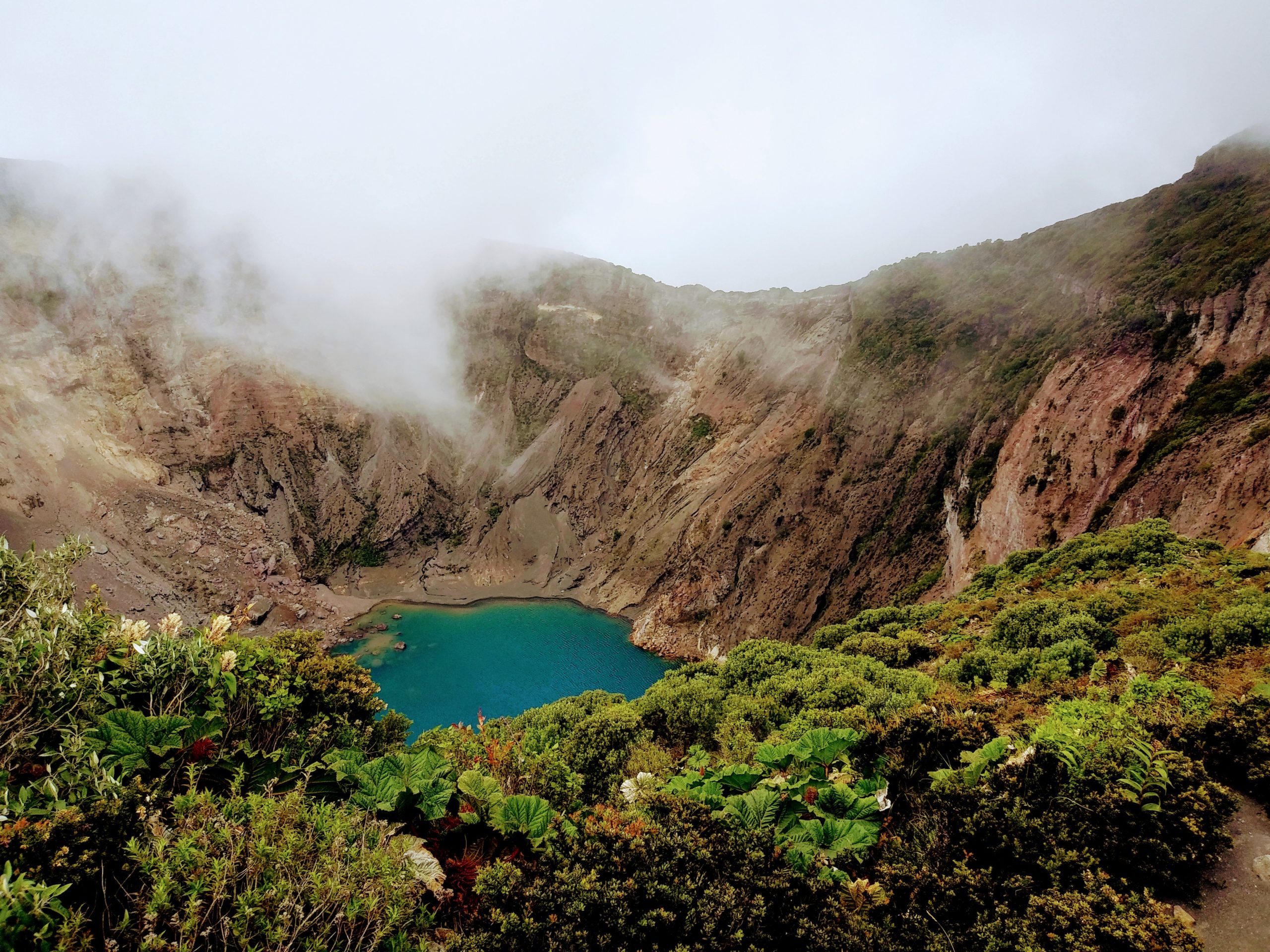
Deforestation rates in the tropics are soaring. According to a report by Frontiers in Environmental Science, ‘the world’s forests, particularly those in tropical areas and climates, are being degraded at an alarming rate. Tropical rainforests contain half of all biodiversity, regulate global climate, purify air and water, and serve as a source of resources for local communities, therefore are incredibly crucial to the health of the planet.’ The loss of biodiversity and species diversity is catastrophic, leading to lowered ecosystem productivity, extinction of species and threat to human life.
But efforts to replant trees and encourage forest recovery are starting to turn the tide. Particularly in certain countries – take Costa Rica as a case study and it should make you realise that with the right ambitions and intentions, we can all, as individuals even, take steps toward a better future.
After suffering some of the highest rates of deforestation in the world in the 1970s and 1980s, Costa Rica has regrown large areas of its tropical rainforest. Between 1940 and 1983, Costa Rica, lost approximately, 50% of its original forests. It’s now the only tropical country to actively stop, and reverse, deforestation. The small country really has set the bar when it comes to climate action and protecting biodiversity.
As an incredibly environmentally progressive country, since 2014, Costa Rica sourced 98% of its energy from renewable sources, has reforested large amounts of degraded land and utilises strong constitutional rights such as the human right to a healthy environment to increase sustainability. Costa Rica also has one of the greatest percentages (26%) of protected land in the world. It’s no surprise then that, in 2019, the country was named Champion of the Earth by the United Nations for its contributions to fighting climate change and protecting nature.

Perhaps most impressive, though, is this way in which it has regenerated lost forests and habitats. As the report by Frontiers continues, ‘Costa Rica successfully reversed deforestation by restoring forest cover from 24.4% in 1985 to >50% by 2011 through implementation of national environmental protection policies in the 1990s that included a portfolio of Pas (Protected Areas), PES (Payments for Ecosystems Services Programs), and ecotourism.’
So, how exactly did they achieve this increase in forestation? In recognising that the situation in Costa Rica was pretty unique, the tourism ministers knew that they could and should target ecotourism as a means to improve and protect their biodiversity.
Although small, the popular tourism destination houses more than 6% of the world’s biodiversity, drawing people in from all corners of the globe to see such a natural phenomenon. Using the four pillars of sustainable tourism (sustainable management, socioeconomic impacts, cultural impacts, and environmental impacts), the government ensure that Costa Rica’s tourist attractions are centered on respecting the environment. Travellers are therefore offered opportunities to reduce their carbon footprint and contribute to sustainable tourism and volunteering programmes – most often directly supporting reforestation. Earlier this year, the Costa Rica National Forest Financing Fund launched a carbon-footprint calculator for tourists to understand the impact of their travels and offset in a way they see fit. Donations and contributions to this program are used to strengthen forest conservation efforts in Costa Rica.

With nearly 50% of Costa Rica’s biodiversity found in the Monteverde Cloud Forest Biological Preserve, it’s a fine example of the aforementioned ecotourism focus coming in to play. Established in 1972 by a coalition of scientists from the Tropical Science Centre (TSC) and Quakers from the local community to protect one of the last tracts of pristine Cloud Forest in Central America, the Preserve is a pioneer and progressive conservation and ecotourism model based in biodiversity research and education.
As a feature by Treehugger quite rightly drew attention to also, ‘an example of sustainable management in the community [is] locally owned Arenal Observatory Lodge [which] maintains 270 acres of natural forest and 400 acres of reforestation areas.’ Many hotels and resorts across the country, like Arenal Observatory Lodge, focus an incredible amount of their attention on reforestation, and have access to a brilliant support system from the Costa Rican Tourism Institute (ICT) and the Certification for Sustainable Tourism, which provides tourism companies with guidelines to manage their business sustainably.
But it isn’t all down to ecotourism, and direct sources of income for locals and farmers have been a large part of the solution. Known as FONAFIFO, a financial mechanism for the recovery and conservation of forest cover, locals are encouraged to restore forests. Although this doesn’t often lead to them making profit, they can then utilise ecotourism (many will charge a fee to guide biologists, ecologists and sustainable tourists around their land) and PES from the government.

As well as the government scheme, non-profits such as Reforest the Tropics has planted 356 hectares of forest since it’s founding on the ground of Costa Rica in 1996 and creates a direct source of income for many struggling farmers. According to Borgen Magazine, they ‘create the equivalent of one full-time position for every 15 hectares planted but also require many more short-term workers during the initial stages of planting. Most of these workers come from the local community.’
Clearly, innovation, pioneering attitudes to economic solutions and moving quickly on sustainability initiatives are central to the success and progression seen in Costa Rica. It’s about experimenting, working together as a community and recognising the need for urgency.
A recent National Geographic article shone a spotlight on how researchers are experimenting and have tested whether coffee pulp could also contribute to bringing Costa Rica’s rainforests back to life. The findings were published in the journal Ecological Solutions and Evidence and showed a dramatic improvement from the coffee over the course of two years. This is a prime example of how experimenting and ploughing resources into sustainability campaigns can yield incredible results over short periods of time. Agricultural by-products are a great place to start when it comes to biodiversity and reforestation, and seemingly Costa Rica is, again, leading the way in its acceptance and enthusiasm to keep trying new things.
Taking that attitude alone is something we could all do in our everyday lives. That is, if we all experimented more with ways to live sustainably and all looked for ways to improve on a daily basis, the world would slowly start looking like a much better place. The Costa Rican philosophy of Pura Vida, meaning Pure Life, is embedded in their culture and manifests in a strong connection between people and nature. As a nation, they are hyper-aware of the effects humans have on the environment and work together to preserve it. Sound like something we could all adopt?
With Costa Rica’s President Carlos Alvarado Quesada at the helm, who recently announced his plans to decarbonise the country by 2050 and called on several world leader’s to join him, few countries can rival the efforts of the small country. Costa Rica continues to be committed to changing the course of our planet, and recently announced their updated, more ambitious Nationally Determined Contribution (NDC). This commits the country to taking actions that would help limit global warming to 1.5 degrees Celsius. It also promises a further reduction in emissions, aiming for a maximum of 9.11 million tonnes of carbon dioxide by 2030.
So, when it comes to trying to live more sustainably, could we all benefit from following in Costa Rica’s footsteps? Keep their enthusiasm, efforts and President Carlos Alvarado Quesada’s progressive attitude in mind, and commit to taking small, yet ambitious, steps everyday.

When we reframe a chore such as laundry in this way, and take into account that the average household uses their washing machine 4.7 times a week, with each wash requiring around 50 litres of water, perhaps it doesn’t seem so trivial after all. Whether washing our clothes at home or taking special care items to be professionally cleaned, creating some impact on the environment is inevitable.
Launched in 2017, Oxwash is a sustainable, ultra-hygienic and on-demand laundry and drycleaning company founded by former NASA engineer Dr Kyle Grant while he was completing a PhD at Oxford University.

“I fell into the laundry space completely by accident after getting frustrated doing my sports teams kit one day and finding all the machines out of order. I started a student laundry service that very quickly grew due to the demand from small businesses. When I took my first look under the hood of a commercial laundry I was horrified at the waste being produced and the inefficiencies that were often plugged by below minimum wage workers.” Kyle was inspired to re-engineer the process, making it more planet friendly. “I have always wanted to build a business that has a positive impact for every single customer from day one” he says.
The commercial laundry industry is both wasteful and pollutive throughout much of the process. Traditional laundries are renowned for high energy usage from their washing and drying machines. There’s also the issue of microfibre pollution, caused by inadequate filtration systems which are unable to prevent microplastics from entering our water systems. Then the type of detergent used, or the packaging it comes in; most laundries use whichever detergent is most cost-effective, and these tend to have high levels of toxicity, such as the chemical PERC which is a known health and environmental hazard. Finally, the effect of transportation; most laundries that offer collections and deliveries use vans as transport, contributing to GHG emissions and CO2 pollution.
From collection through washing and back to delivery, Oxwash aims to maintain net zero carbon emissions – something which has never been done before. Kyle’s career as a scientist for NASA informed the process greatly, by bringing a systems engineering mindset to the problem:
“My time working in the aerospace industry has etched in my mind the importance of viewing a ‘system’ as a whole as well as the sum of the parts and analysing our service completely end-to-end. To that end, Oxwash owns the entire value chain from collection, washing and delivery to the tech development and washing research and development. Like launching a rocket it’s only when you build and launch the whole vehicle can you see how all the parts function together in the most efficient way.”
Cutting down on energy consumption, the company uses solar panels to power their washing machines. They use biodegradable detergents and emulsifiers that are automatically dosed depending on the weight of each wash which prevents up to 25% excess chemistry being used. As for the water, where each 8kg wash cycle typically uses 50 litres of water per wash, Oxwash uses 18 litres. Using ozone technology for disinfection, washes are done at low temperatures while still destroying bacteria, viruses and allergens and more recently, dissolvable laundry bags have been introduced to eliminate coronavirus transmission through fabric and clothing. As for the transportations, Oxwash uses e-cargo bikes which save 6,700 KG of CO2 emissions per year.
Oxwash’s model is simple; customers place an order online, choose a collection and drop off time and place, and have their items collected, washed and delivered, all with zero net carbon emissions. The eco-friendly dry cleaning service isn’t just available for individuals, Oxwash has also partnered with companies including Marriott and Airbnb too; both heavyweights in the hospitality industry which is notorious for its huge impact on the environment through laundering, particularly towels and bedding.

Kyle hopes that disrupting the laundry industry will have a knock-on effect on other adjacent industries. “Laundry is one of the oldest circular economies out there. You don’t sleep in your bed sheets once then throw them away! We believe that this mindset and model can be extrapolated.” Here’s hoping!
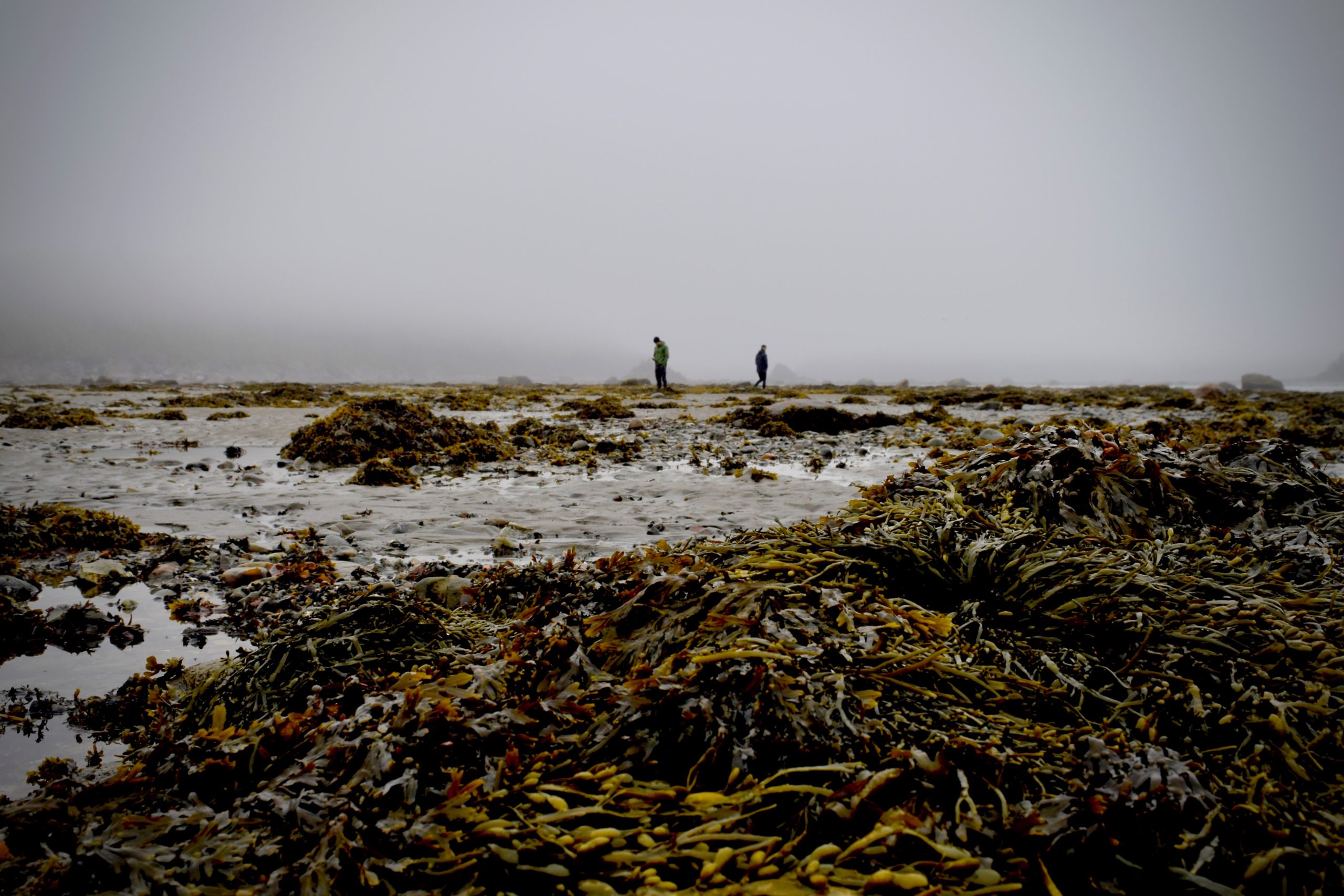
The challenge? Getting the word out there and facilitating the process. You see, seaweed has the ability to combat climate change by regenerating marine ecosystems, absorbing carbon emissions, and creating biofuel and renewable plastics. That’s not to mention it’s power as a renewable food source, too, and the regeneration of local infrastructure and jobs – the sustainable social impacts could be huge.
Given that there are so many concerns over our global consumption of meat and the environmental impact of continuing to eat meat, seaweed could be a significant turning point. It’s a source of protein and packed full of nutrients, so when it comes to eco-friendly, nutrient rich food sources, seaweed could be the one. If seaweed can start being used as and seen to be an everyday and usual food fix, it’ll have hugely positive effects on the outcome of our planet. The seaweed to food movement is massive, and holds giant potential. Not only is it a great protein source and meat substitute, but it’s a way to pioneer the positive effects of eating lower on the food chain.

In fact, a study by Yale University on how ‘third way’ technologies can help to turn the tide on climate change, highlighted that there is ‘one study [that] suggests that if you cover 9 percent of the world’s oceans in seaweed farms, you could draw down the equivalent of all our current emissions – more than 40 gigatons a year – and grow enough protein to feed a population of 10 billion people. That’s a huge opportunity.’
Another study by Yale showed the following: ‘Plants in the ocean, from seagrasses to plankton, add up to just 0.05 percent of the plant biomass on land, but are so pervasive and efficient at sucking up carbon that they cycle through roughly the same amount of carbon every day as all the land-based plants. Yet seagrass ecosystems are being wiped out, thanks to everything from pandemic disease to water pollution and coastal construction projects.’
In an article we featured recently about the humble sibling to seaweed, seagrass, Evie Ramirez highlighted that ‘these productive plants work as filtering systems for coastal waters, helping to keep them clean by soaking up nutrients and bacteria. They also provide coastal defence against rising sea levels and erosion by stabilising sediment and reducing wave and tidal energy.’
But seaweed holds even more power than seagrass. The key difference between the closely related species is that seaweed is a macroalgae, whereby particles will be exported out to sea where the carbon can be sequestered. Unlike seagrass, seaweed doesn’t have roots, so the carbon from macroalgae is stored away from the shore, it’s less likely to be disturbed and returned to the atmosphere. Researchers at Harvard have found that seaweed is, in fact, the most effective natural way of storing carbon emissions away from the atmosphere.

Crucially, seaweed farms also allow important resources for the growing demand for change in the fashion industry. Recently, New York designer Charlotte McCurdy created a seaweed raincoat. Concocting the creation of this in a laboratory, before teaming up with the renowned designer Phillip Lim, Charlotte wanted to plant a seed of hope in the fashion industry and show that, although material development is slow, we can all step in and do our part. Her focus now is on forming an innovation, helping people to recognise that we don’t have time on our side, and utilising the resources that will ultimately become available from seaweed farms across the globe.
But, as this article for Time states, though: ‘For the industry to scale, Druehl says, governing bodies—both national and international—as well as private companies have to make major investments to help the industry get its feet off the ground.’
One such company that is making waves is SeaGrown, situated on the Yorkshire Coast. With support from the Coastal Communities Fund, they are establishing a seaweed farm in the clean, cold, open waters of the North Sea. ‘Our pioneering seaweed farm will ethically produce a sustainable crop which British customers and Industry can use in lots of innovative ways – from biodegradable plastics to a new source of pharmaceuticals, cosmetics, textiles and biochemicals,’ they say. We also produce our own fantastic range of seaweed food seasonings which are a great way of adding serious flavour to all your food with the nutritional boost of SeaGrown seaweed. Most importantly of all, our super-seaweed crop just needs the sun and the sea – no chemicals, fresh water, power or even land.’


The COVID 19 pandemic has had a plethora of unexpected consequences, from a rise in domestic violence cases to massive reductions in global carbon emissions. When it comes to cut flowers, the pandemic has had both expected and unexpected impacts.
Initially, lockdowns crashed the EU cut flower market, which lost €1bn in the first six weeks of lockdown. This impacted not just retailers, but also growers and suppliers alike. However, unexpectedly, after the initial lockdown, the online floriculture market started to appeal to younger consumers looking to brighten up their homes, send gifts remotely and benefit from having a little slice of nature at home. This causes e-commerce flower sales to boom, and also forced retailers to look at their supply chains in order to develop resilience for the future.
Unfortunately, however, there are many considerations to take into account when it comes to buying flowers, as with any globally produced product. The UK is a major market for cut flowers in Europe, with annual consumption exceeding €2.5 billion. Between 2011 and 2015, the annual import of roses alone increased from €161bn to €182bn, making up around 25% of all imported flowers sold. Most of these come in from the Netherlands, but increasingly flowers are grown in less economically developed countries (LEDCs), such as Kenya and Ethiopia, thanks to climatic conditions allowing for year-round production, and cheaper labour costs.
There are many variables that affect the environmental and ethical impact of cut flowers, such as growing conditions, pesticide use, import distance and method and working conditions.
Since cut flowers are not edible, they do not have the same regulatory controls as crops, meaning that pesticide use is rampant, and pesticide residue is much higher than allowed on foodstuffs. It is estimated that one fifth of the chemicals used in the floricultural industry in LEDCs is banned or untested in the US. For example, methyl bromide, a toxic chemical used as a pesticide, was banned and ceased to be used in the US by 2005 due to its harmful effect on the ozone layer and potency as a greenhouse gas. However, it took until 2015 for it to be phased out elsewhere, leading to numerous potential issues, both environmentally and ethically – methyl bromide is highly toxic to humans and may affect the nervous system after long-term use. In the same way that factory workers in the fashion industry are often exposed to harmful chemicals through their work, floriculture workers have similar issues. A study of female workers in Ecuador showed that pregnant women exposed to everyday pesticides were more likely to have children with a neurological impairment and high blood pressure.
Another issue of note when it comes to growing conditions is water usage. The water footprint of one rose flower is estimated to be 7–13 litres, and the market for cut flowers could eat into the water availability for other industries, such as food production. Virtual water refers to the amount of water required to produce an amount of product, e.g. on average it takes 1,340 cubic meters of water to produce one metric tonne of wheat. Floriculture accounts for 45% of the virtual water exports from Kenya, i.e. of all exported goods, the floriculture industry requires 45% of total water usage. This can place added strain on water-poor countries, and further regulation is needed to ensure a fair distribution of water throughout vital industries.
Emissions are the most obvious difference between imported and cut flowers. According to one study, emission savings are the greatest when purchasing British-grown bouquets, followed by those with a longer vase-life (as fewer will need to be bought). Imported stems produce at least 3x as many emissions as British-grown, maxing out at a whopping 67x the emissions for the most polluting, when considering transportation, heating and electricity for growing.
Ethically, the conditions on some flower farms have significant room for improvement. Floriculture provides vital work and income to many, many people – in Kenya alone, it provides over 2 million jobs and over $500 million a year for the country. However, floriculture often uses a workforce of poor, less educated, primarily female workers, meaning that the industry is ripe for exploitation. This can come in the form of low pay, poor and dangerous working conditions and repression of vital trade unions, especially in LEDCs. The issues aren’t constrained to poorer countries, however – pesticide use in the Netherlands still has harmful effects on workers, and the industry is being encouraged to clean up its act, after a report showed that pesticide use was six times higher than other forms of intensive agriculture in the same regions.
Thankfully, the market share of locally produced UK flowers has been increasing steadily, thanks in part due to the more rigorous ethical and social standards, such as the Ethical Trading Initiative (ETI) and Fairtrade.

Article written by Hattie Webb, research assistant.
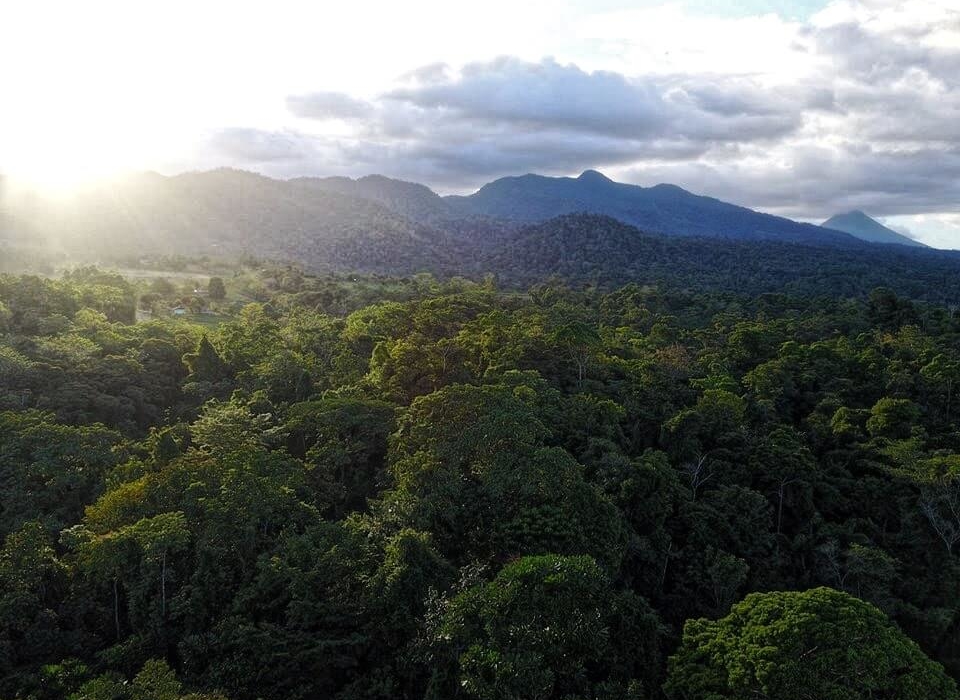
It’s for this reason that the movement is picking up pace – it’s more than necessary for future-proofing our planet. As the Climate Reality Project points out, ‘in addition to a long list of incredible benefits for farmers and their crops, regenerative agriculture practices help us fight the climate crisis by pulling carbon from the atmosphere and sequestering it in the ground.’
But what is regenerative agriculture, exactly? According to Regeneration International, it’s ‘a holistic land management practice that leverages the power of photosynthesis in plants to close the carbon cycle, and build soil health, crop resilience and nutrient density. Regenerative agriculture improves soil health, primarily through the practices that increase soil organic matter. This not only aids in increasing soil biota diversity and health, but increases biodiversity both above and below the soil surface, while increasing both water holding capacity and sequestering carbon at greater depths, thus drawing down climate-damaging levels of atmospheric CO2, and improving soil structure to reverse civilization-threatening human-caused soil loss.’
It’s worth noting that the details are often incredibly complex (especially to anyone who doesn’t know a thing or two about rural practices and the farming industry) and are constantly evolving. It’s picking up momentum, which is brilliant, but it can be hard to pin down what, exactly, it means. The concept is simple though, so let’s start there. Essentially, regenerative agriculture is a farming principle that works to regenerate the soil, place nutrients back and replenish the earth, working with as opposed to working against nature.
These principles and practices include something called over-cropping, whereby you plant to cover soil rather than harvest. Bare soil is bad soil, so regenerative agriculture uses cover crops to maintain living roots in the soil year-round and no gaps. Regenerative farming minimises the use of pesticides or chemical intervention, and seeks to reduce physical disturbance or intervention. It also works to increase diversity through the planting of lots of different plants and crops, so as to rich, varied and nutrient-dense soil.

But how does sustainable farming link to ethical fashion? Agriculture is often only associated with food systems and animals, but it’s important to realise the link between this and fashion, too. Wool production, cotton creation, it’s all a part of the wider farming industry, and the fashion industry and its supply chains are intrinsically connected to soil degradation.
Statistics on cotton are particularly damning, with the World Wildlife Organisation stating that although the global reach of cotton is one of the widest material reaches, ‘current cotton production methods are environmentally unsustainable—ultimately undermining the industry’s ability to maintain future production.’ The concerns we have around sustainable food systems, then, directly apply to the future of fashion as well.
It’s about exploring how we can approach fashion regeneratively alongside the regenerative agriculture push, and thus, raise awareness of this also. Let’s start with Fibreshed. A fibreshed is a regional system, a specific geographical location, that defines and offers boundaries to a natural textile resource base. This allows textiles to be created responsibly, minimising waste and benefitting the environment.
The not-for-profit Fibreshed, which started in 2010 in California, has supported over 30 official Fibreshed communities all over the world. The organisation implements climate beneficial agriculture, rebuilds regional manufacturing, and connects end-users to the source of fiber through direct educational offerings. This ethos looks at ethical fashion production as an entire system, and works towards a soil to soil concept whereby textiles are grown, created, designed, produced, worn and composted locally.
As it stands, sustainable fashion doesn’t often actively give back to the land, but in practices such as this, that could change. Reducing our consumption of fast fashion is great but it’s about making the eco-fashion movement regenerative, too.
Carbon Cycle reports that ‘in 2011, Fibershed prototyped a “150-mile wardrobe” from regionally grown fibers, natural dyes and local labor that generated zero toxic fresh water effluent, reducing the CO2 footprint to one sixth that of conventional garments, and developing a network of over 200 urban designers and rural farmers willing to work together to build a new model for fiber systems.’ Patagonia, too, now works with regenerative organic cotton farms in India to produce clothing that actually does something good, as well as helping to mitigate a bigger problem.
Want to know more about regenerative agricultural practices? You can actually now combine your love for travel, seeing the world and educating yourself with incredible trips and homestays that immerse you within regenerative agriculture. Agritourism is on the up, and as Evie Ramirez points out in a feature she wrote for us last year, ‘is a meaningful and effective way for the hospitality industry to educate and entertain tourists while supporting a wholesome, thriving economy. For visitors, it’s a unique, experiential learning opportunity to understand agriculture. For farmers, it’s a way to supplement income during off-seasons, gain recognition for their agricultural produce and protect their land’s natural resources and amenities.’ Look also for regenerative farming certification: find more info here.
You’ll also find that organisations such as Regenerative Travel have plenty of Farm to Table sustainable escapes on their books, too. Places such as Finca Luna Nueva in Costa Rica offer guests an insight into how regenerative farming can change the outlook of the ecosystem. As Regenerative Travel put it: ‘The essence of Finca Luna Nueva is a shining passion for a regenerative relationship with natural resources. Certified biodynamic, a farm approach of replenishing and feeding into the natural life cycle is key to a harmonious, sacred bond with the land and ecosystem.’

Collect all your food and kitchen scraps to create a nutrient rich meal for your soil.
Opt for planting something such as grazing rye, mustard (fast-growing and can be incorporated into the soil after a few months to boost organic production), winter field beans or peas (great for boosting nitrogen) or buckwheat.
This is a great one for small urban gardens as it’s relatively easy to do when you don’t have a big garden to tend to. For regenerative farming, it’s recommended to pull one crop up and replace it with another on the same day. This decreases soil exposure and increases overall yield potential.
Implement a permanent bed structure whereby you use the same soil season to season, instead of turning it over all the time and releasing carbon into the atmosphere. You can also use leaves or straw as mulch and use a broad fork as a minimally invasive way of loosening the soil.
Think of them as playing a leading role in the diversity of your garden and see them as protectors of your precious plants. Only trim them when they get big enough to annoy you (once or twice a year).
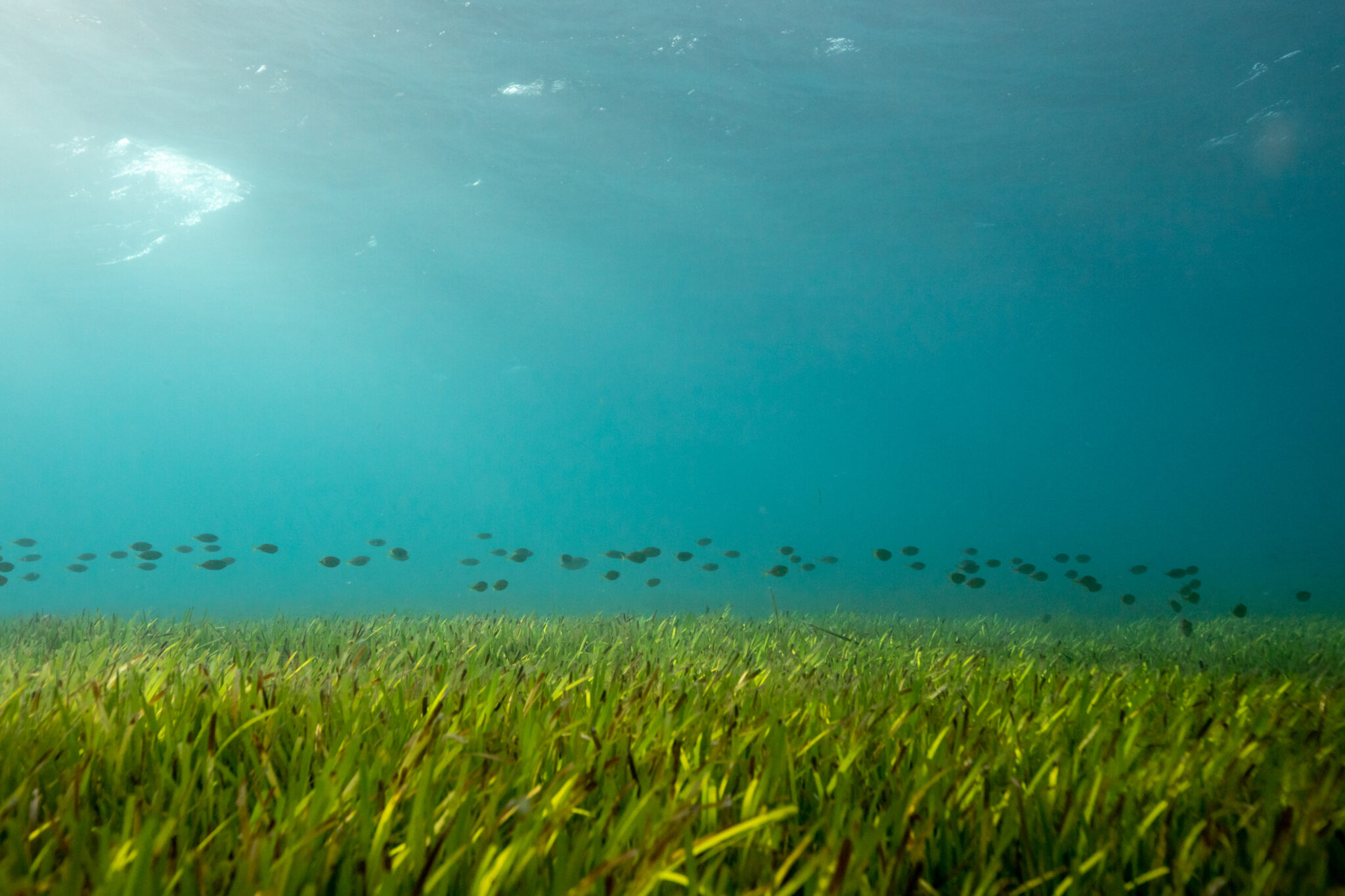
Seagrasses are often referred to as ‘the lungs of the sea’ because of the crucial role they play in generating oxygen for the planet. They photosynthesise and release oxygen in the same way as plants found on land, and do so at an impressive rate – for every one square metre of seagrass, around 10 litres of oxygen is produced on a daily basis. You can find these underwater gardens in shallow waters across every continent except for Antarctica. They usually live around 1-3 metres below sea level, however some can grow at depths of up to 58 metres.
Aside from producing oxygen, sea meadows work in many ways to benefit the planet both above and below sea level. A key factor is their absorption of carbon dioxide, helping to reduce greenhouse gas emissions which contributes to lessening the risks associated with climate change. They also help to maintain healthy coral reefs in several ways, such as by reducing the acidity of sea water which in turn protects the reefs from degradation. These productive plants work as filtering systems for coastal waters, helping to keep them clean by soaking up nutrients and bacteria. They also provide coastal defence against rising sea levels and erosion by stabilising sediment and reducing wave and tidal energy.

The meadows also provide a habitat and food for marine life, many of which rely on the dense canopies as their main source of nutrition. Sea turtles are often found grazing among the blades of grass and consume up to 2kg of them per day, and they are the primary habitat for the endangered dugong. Humans benefit from and depend on this ecosystem in so many ways; they keep our coastal waters clean, stabilise the climate, regulate ocean environments and of course, as nursery habitats for a rich diversity of fish, have a large impact on food supply and livelihoods. Seagrasses have even been used by humans as a natural fertiliser for crops, to insulate homes and make woven furniture.
Both climate change and direct human intervention has caused a drastic decline in ocean meadows. These include coastal urban developments, industrial activities that cause water pollution, fishing activities and aquaculture. According to Project Seagrass, a marine conservation charity, we’ve lost over 35% of the world’s seagrass meadows over the last 40 years. While warming sea temperatures have a role to play, human pollution is the biggest culprit in multiple ways. Boating activity, for example, stirs up sediment from the seabed which interferes with light levels and therefore the photosynthesis required for the plants to grow. Boat propellers, trawlers’ nets and dredging can also directly damage the leaves, stems and roots. Destroying them leads to dangerous imbalances in our oceans, threatens marine biodiversity, and disrupts the natural preservation of our underwater environments.
Coastal areas are home to some of the richest and most fragile ecosystems on earth, but they are also some of the most under threat communities in the midst of the climate crisis. Conservation and restoration of the sea meadows is vital in order to improve the health of our planet on local and global scales. Unfortunately, as many do not see or understand the value of these incredible plants, they are inadvertently contributing to their decline.

Runoff pollution from land fertilisers, construction sites and drains as well as harmful fishing practices need to be regulated and monitored. Restoration is also carried out in many parts of the world, where seagrass beds are being repopulated with seedlings or transplanted plants which are in a healthier condition. However for these efforts to be optimised, the root causes of the damage which occurs in the first place needs to be addressed and acted upon. Most preservation methods focus on maintaining their biodiversity, but because there is no overruling international legislation dedicated to the protection of ocean meadows, their future is pretty much dependent on local and regional governing bodies or agencies, which vary around the world.
Agencies such as UK-based Project Seagrass are helping to raise awareness, provide coastal and non-coastal communities alike with vital information and work towards garnering the attention and help of people around the world by partnering with national governments, public and private institutions and NGOs. Other inspiring organisations worth looking into are Dugong & Seagrass Conservation Project and Seagrass Watch. There are several ways you can play an active role in conservation, such as joining a marine conservation programme do advocate for their work within your own community, donate towards field research, take part in awareness campaigns, ‘adopt a patch’ of seagrass and visit these amazing ocean meadows yourself on your next holiday – you’ll probably find one a lot closer than you think.
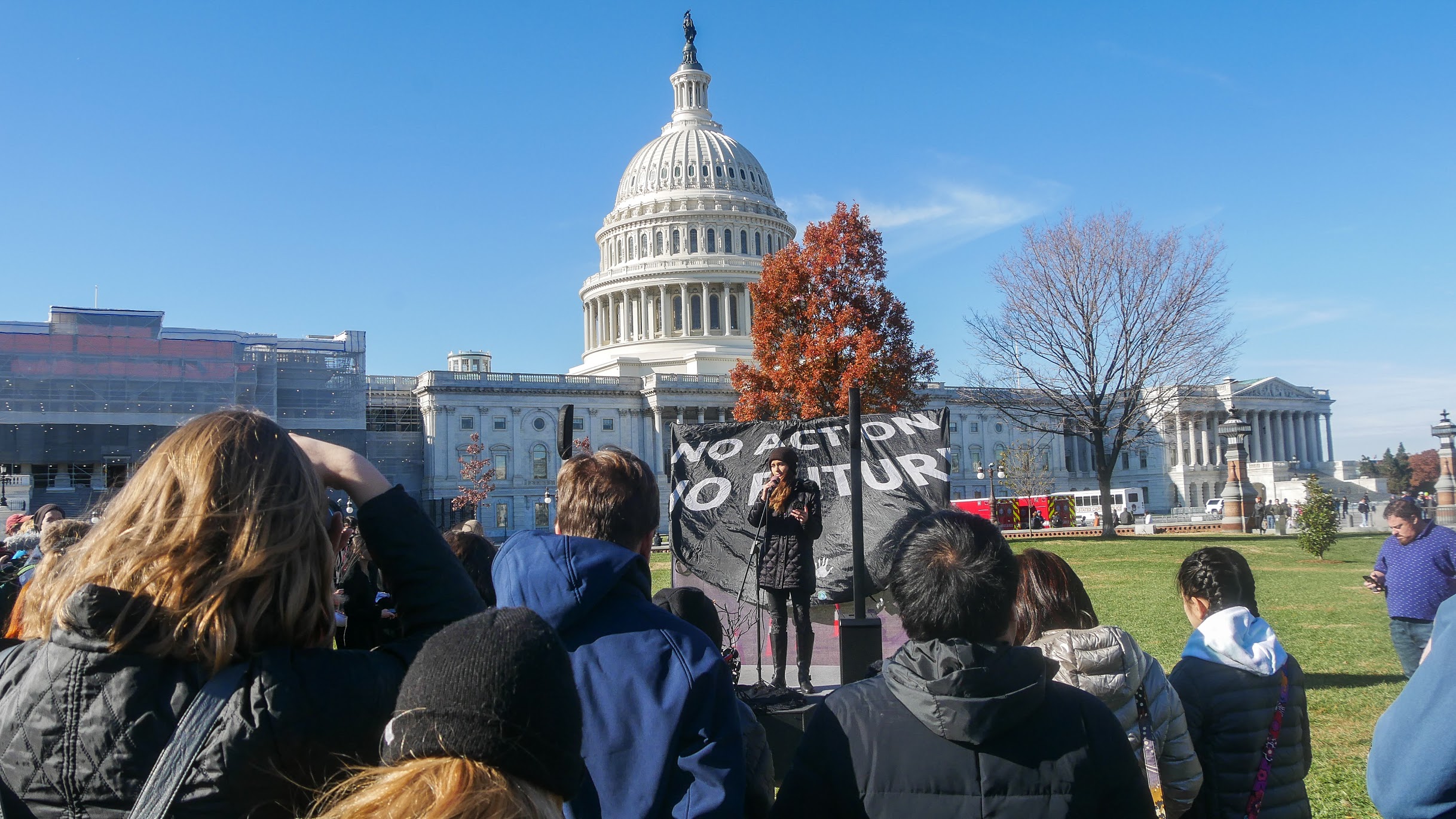
It’s hard to know where to start when it comes to introducing Sophia Kianni. At just 19 years old, the Iranian-American climate activist has already achieved so much. She represents the United States as the youngest member of the inaugural United Nations Youth Advisory Group on Climate Change. She is a Senior Partner at JUV Consulting, a Gen Z marketing agency that works with clients to authentically engage young audiences. As a journalist, she’s penned articles for the likes of Teen Vogue and Refinery 29. She has been named VICE Media’s youngest Human of the Year. The list goes on.
Today, we’re here to talk about Climate Cardinals. Its purpose? To make the climate movement more accessible to those who don’t speak English.
The idea for Climate Cardinals came about seven years ago following a trip to Iran, where both Kianni’s parents are from, “I was really struck by how horrible the pollution was and I started to research the climate in the Middle East. I discovered that the temperatures there were rising more than twice the global average,” she begins. Later, while chatting with her relatives about the topic, she was surprised to learn that they didn’t even know what climate change was, “I realised that it’s because there’s very little information available in Farsi, which is their native language, so I started translating some of it with the help of my mom to try and teach them.” And there it was: the lightbulb moment for Climate Cardinals. “I decided to start Climate Cardinals because of that experience. I wanted to replicate my success on a larger scale.”
It was in October 2019 that Kianni really started to work on the idea and she began by securing a fiscal sponsor (March On) so that Climate Cardinals could have 501c3 status. Next, she assembled a small team and tasked them to help create a logo and a website. Then came TikTok – “the way we really got off the ground is we had a viral TikTok video that reached over 100,000 people on the first day. It drove people to sign up with us,” she explains, revealing that the team still uses social platforms like Instagram and TikTok to recruit volunteers. Currently, over 8,000 volunteers in 41 countries are working to source and translate science-based climate information.
Social media had a role to play in the start of Kianni’s journey as a climate activist, too. “I saw people like Greta (Thunberg) and other young people in the US really starting to come together and organise events. I wanted to be a part of what they were doing because I thought it was so important and they were being so effective in raising awareness,” she reveals. That’s why she sent DMs to a bunch of organisers for various groups on Instagram – like Extinction Rebellion, Fridays For Future and Zero Hour – and simply asked how she could get involved. She credits those experiences with helping her to launch Climate Cardinals.
The accomplishments don’t stop there. Kianni is also thrilled to be the host of The New Fashion Podcast. “My interest in climate action means there’s a natural connection to sustainable fashion, and hosting the podcast is something that I really love doing,” she admits. “I see myself continuing to do things in the sustainable fashion space as I now buy all of my clothes secondhand and it’s something I’m very interested in.”
So, what advice would she give to someone who wants to shop more consciously? “It’s all about making the small changes that you feel you can, and that fit with your lifestyle. I look at it through the lens of owning your privilege. If you’re in a position of socioeconomic power – where it’s not hard for you to go out and buy all of your clothes from a more sustainable retailer – then you should totally do that. But I also understand that, for some people, all they can afford is fast fashion and I’m not going to shame them.” Kianni adds that she doesn’t believe climate change will be solved solely through individual action. Instead, it’s something that the government needs to pass policy on.
This leads us nicely onto the topic of Biden’s Earth Day summit. “I hope that with Biden now in office we’ll see that the climate crisis is being taken more seriously,” she divulges. “The US has re-entered the Paris Climate Agreement and I really hope that we can go beyond that to engage in conversations with other countries and make sure that they’re also committing to taking action. I hope for us to see climate progress.”
Find out more about Climate Cardinals and Sophia at www.https://www.climatecardinals.org/
Donate to Climate Cardinals here.

Leonardio DiCaprio-backed documentary Seaspiracy was released on Netflix this month, to a wave of commentary from viewers and industry experts alike. Directed by Ali Tabrizi, the film documents the issues facing our oceans, diving deep into topics such as plastic pollution, commercial whaling and the human rights issues of the fishing industry.
The documentary raises some very real and important points about the perils of over fishing, combined with a somewhat sensationalist narrative. So what are the facts, and what can we learn from the film itself?
The documentary points out that while governments are working hard to be seen banning single use plastics such as straws and cotton buds, the largest single contributor to ocean plastics (and thus microplastics) is from commercial fishing. Across the whole ocean fishing gear contributes to around 10% of ocean plastics, but in concentrated areas such as the Great Pacific Garbage Patch (700,000km squared of plastic sitting in the Pacific Ocean), this figure rises to an astounding 46%.
Plastic in the oceans is an issue for many reasons. For sea animals, consumed plastic can lead to starvation, due to the stomach filling up with plastic, rather than the necessary food. This can be through plastic being mistaken for other food, such as jellyfish, or consumed via bioaccumulation, where microplastics plastics become more and more concentrated in larger animals due to the number of smaller animals they have to consume to survive. Over time, the food is digested but the plastic remains, building up until it kills the animal. Ghost fishing is another issue, whereby discarded fishing nets and lines continue to kill wildlife long after being discarded. Between 500,000 to 1 million tons of fishing gear is discarded or lost in the ocean every year, and without any incentives to stop this, it’ll continue to be easier and cheaper to dump broken fishing gear in the sea than take it back to land for recycling.
If we want to actively tackle the amount of plastic and microplastics in the ocean, we need stricter regulations on the types of fishing gear allowed, and enforcement of how it can be safely disposed of, without doing any more harm than that intended.
Over the last decade or so, there have been increasing numbers of reports of deaths and disappearances of those working to enforce rules designed to protect fisheries. Due to scarce resources and ever tightening regulations, ocean watchdogs are under increasing pressure to accept bribes or look the other way when it comes to enforcing legislations. Those that don’t have increasingly met grim fates.
On top of this, Seaspiracy shone a spotlight on the world’s complicity with modern day slavery used in commercial fishing. Details are understandably murky, but the Global Slavery Index has stated that modern slavery exists in fishing in most parts of the world, thanks in part to the desire to reduce costs in this low-tech, highly labour-intensive, low-profit industry.
The nature of the industry – offshore, often under cover of night, hidden from sight – means that escape or relief is impossible for most. The issue is not unique to Thailand – there have been media reports of modern slavery and labour abuses aboard American, British, Chinese, and Taiwanese vessels in recent years too. The ever-growing demand for fish and over exploitation of fish stocks has lead, and will lead, to greater pressures on fishing, directly increasing the amount of slavery used, and greater competition with small-scale fishing villages who rely on fish for food and income. With this competition for an increasingly scarce food source, there can only be one winner, and it’s unlikely to be the Indigenous populations who have been fishing sustainably for millennia.
Farmed fish are marketed as a more environmentally friendly way to eat fish, because they do not plunder wild stocks – the fish are bred specifically for eating, in a similar way to farm animals. However, due to the high density of fish (leading to disease and thus open water antibiotic use), high levels of waste escaping into the surrounding water and lack of regulation, fish farming using our current methods has a high number of issues too.
Atlantic, sockeye and pink wild salmon populations crashed in the late 2000s (and for multiple subsequent years), thanks primarily to local fish f arms. These farms had over 80% prevalence of parasitic sea-lice, a common infection in farmed fish, which infect local wild populations, leading to a 99% reduction in susceptible fish. In addition, due to the release, or escape, of some farmed fish, native populations are interbreeding or being outcompeted, reducing genetic diversity (and thus resilience to threats such as climate change and disease) of native wild salmon populations. The exact same things has happened this year on our own coastline, in Scotland, in part due to sea lice from fish farms. Seaspiracy also pointed out the number of wild-caught fish that go into feeding farmed fish – it is not an efficient way of feeding a population.
Despite a recent press release by the Marine Stewardship Council stating otherwise, it is evident that there is not currently enough enforcement of rules and regulations to ensure the sustainability of wild-caught seafood. With much of the fishing industry working far out at sea, Seapiracy made claims suggesting that it is impossible to guarantee that no bycatch was killed, or animals such as dolphins caught up in nets during the fishing process.
By choosing Dolphin-safe or MSC-certified seafood, you are showing a desire to have minimal impact on the environment, but in reality there is very little that can be guaranteed once a fishing boat is out at sea. Nets are not discriminatory, and even those with the best intentions will end up having some bycatch in the form of dolphins, sharks, turtles and whales.
Seaspiracy set out to raise awareness of the very real, deeply worrying issue of overfishing, and the human-rights issues that come with it. In this sense, they were successful – the film climbed to Netflix’s top 10 in the UK and US, and received praise from celebrities worldwide. Despite its obviously one-sided approach, lack of intersectionality and simplification of an extremely complex issue, the film succeeded in both raising awareness and starting a conversation about ocean conservation. Perhaps the whole film should be taken with a pinch of salt, but the overall message stands true.
Fishing is not intrinsically bad for the environment, especially where fish consumption can replace/reduce red meat consumption, which ultimately has the most negative impact on the environment. Ethics notwithstanding, fishing is an industry that supplies over 3 billion people with a major source of protein, and over 90% of fisheries are small scale, with around 50% of workers being women. The film, perhaps understanding that the majority of viewers would be from the Global North, almost entirely ignored the issue of intersectionality, calling for viewers to give up fish entirely – a task impossible for many globally.
However, Seaspiracy showed that the methods in which we fish on an industrial scale are undoubtedly failing in their job to preserve the world’s largest ecosystem. For most of us in the UK, it is not only impossible to guarantee the sustainability of most of our fish, but also unnecessary to eat it in the first place. Globally, this may not be the case, but for those who have the luxury of choice, cutting down on overall fish consumption as much as possible is a good first step to take – for many people this may mean avoiding fish altogether, but others may not have the means to do so. Avoid smoked fish, processed fish and unspecified ‘white fish’, anything ‘mass caught’ (purse-seine, bottom trawled etc)….. If you have to, buy whole fish where possible and know where it has come from, and how it was caught.
Sustainable fishing, in theory, is absolutely possible – Indigenous populations have been practising it for millennia – and there are many people working around the clock to make this a reality. However, with the lack of infrastructure to regulate and enforce well-meaning legislation, we are a long way from having healthy, recovered ecosystems in our seas, and even further from being able to exploit those reserves to the extent we currently do. Because of this, many are opting to cut out fish until better solutions exist that better represent the interest of all involved parties – not only developed countries’ obsession with plundering resources required by many.
Sharkwater extinction – a documentary exposé on the trade of illegal shark fin.
Ghost Fleet – delves into Thailand’s fishing industry and its links to human trafficking.
Ocean Recovery – an evidence-based look at what the future of sustainable fishing could look like based on scientific data.
How To Save a Planet – a podcast interview with Yurok Tribe Vice-Chairman Frankie Myers on the demise of local salmon stocks and how the tribe is working to bring them back.
How To Save a Planet – another episode looking into the sustainable alternatives to fish, and the birth of the kelp-farming industry.
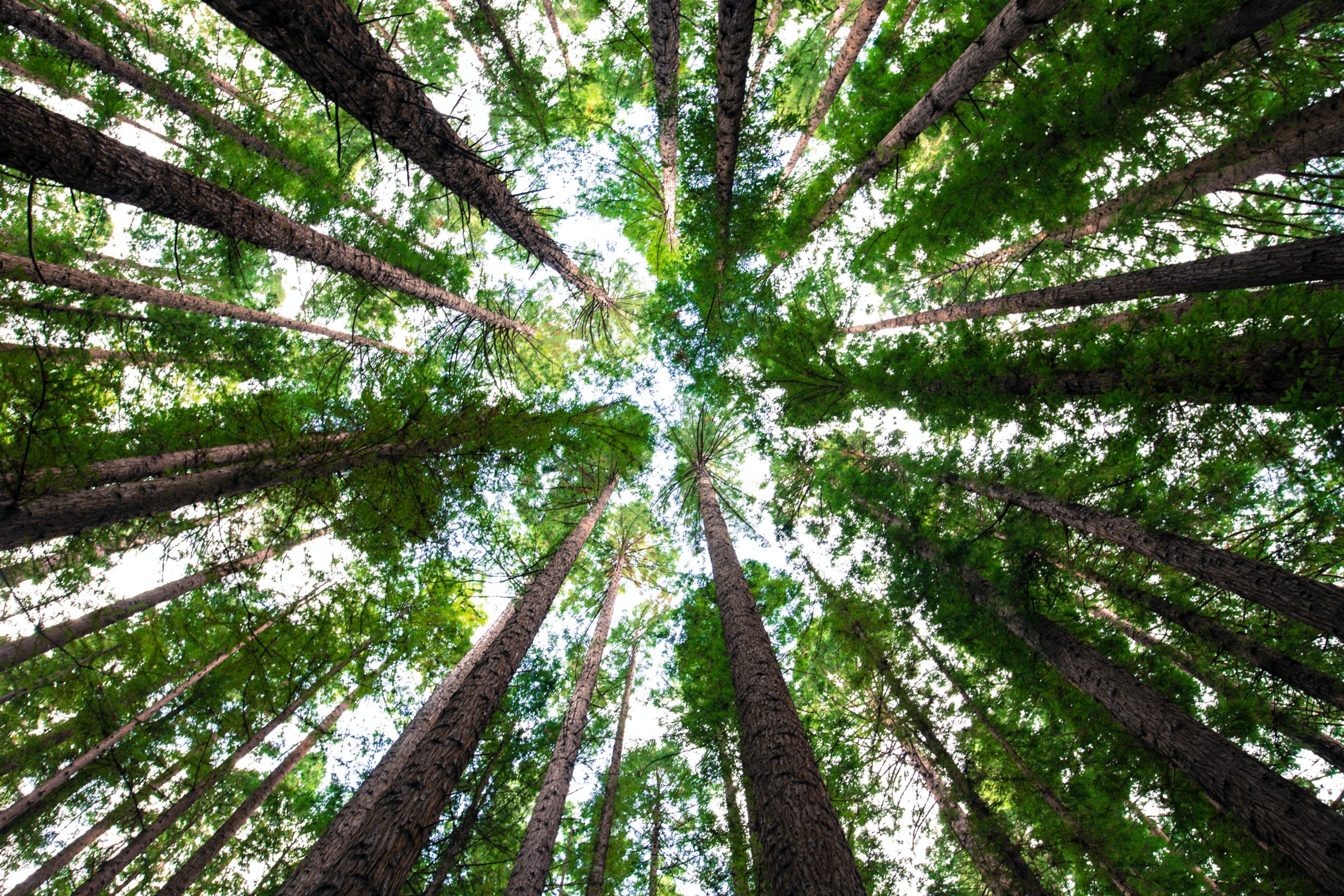
Forests are home to about 80% of the world’s terrestrial biodiversity, with more that 60,000 tree species, and around 1.6 billion people directly depend on them for food, shelter, energy, medicines and income, with the rest of the global population indirectly relying on them for the very air we breathe. The world is losing 10 million hectares of forest each year – about the size of Iceland – which accounts for 12% to 20% of the global greenhouse gas emissions that contribute to climate change. Land degradation affects a further 2 billion hectares – an area larger than South America – increasing the forests’ vulnerability to climate change.
The UK government has planted millions of trees over the last decade and is pledging to plant another million between 2020 and 2024, in an effort to improve biodiversity and sequester carbon. However, Friends of the Earth said this fell far short of what was needed to have a real impact on climate change. It’s important to understand the real effects of carbon offsetting via tree planting, its unintended consequences and potential limitations.
Do they provide an ‘everyone wins’ climate solution? Who do they benefit? Do they have the potential to cause harm? How effective even are they?
Carbon offsetting is a way of paying for others to reduce emissions or absorb CO2 to compensate for one’s own emissions. This can be via tree planting, or funding projects using green energy (which may otherwise have used fossil fuels). Tree planting is now being provided everywhere, from holiday-providers to delivery services and beyond, with a myriad of companies claiming to offset emissions with a range of different schemes.
Many studies suggest that planting trees is one of the more effective ways of tacking land degradation and absorbing excess CO2 from the atmosphere. The Intergovernmental Science-Policy Platform on Biodiversity and Ecosystem Services (IPBES) estimated in 2018 that at least 10% of human-induced greenhouse gas emissions derive from deforestation alone, and other studies have suggested that reforestation could remove three billion to 18 billion tonnes of CO2 per year. In 2017 land use changes – mostly deforestation – contributed four billion tonnes of CO2 emissions to the global total of 41 billion tonnes of CO2. If we stopped cutting down trees in the first place, our annual emissions would be reduced by around 10%. These are all significant numbers.

However, many experts are concerned that offsetting projects don’t lead to the behavioural change we really need to see if we want a palpably different future than the one projected. Offsetting has been shown to encourage people to continue with behaviour they know is harmful, and allows the worst polluters like BP and Shell to continue with unsustainable behaviour, while simultaneously shifting responsibility onto the consumer to reduce damage. Heathrow, too – which hopes to take an extra 265,000 flights a year with a third runway – has stated that it plans to use offsets to make it “carbon neutral” by 2030 and to be “zero-carbon” by 2050, even though it will be directly responsible for releasing millions of extra tonnes of CO2 into the atmosphere with the plans.
Planting trees, while vital in many areas, cannot be a replacement for not producing emissions in the first place. Due to trees’ slow-growing nature, it can take as many as 20 years to capture the amount of CO2 that a carbon offset scheme promises with the click of a button. Tree planting is not the ‘rapid-response’ action we need when it comes to climate change and GHG emissions – it plays a role in reforesting areas that we can previously deforested, and in mitigating the long-term effects of climate change. However it can only provide a fraction of the carbon reductions needed to keep temperatures below the 1.5C to 2C goals, and must be used in conjunction with behavioural change and other faster-acting climate solutions.
Concerns have also been raised about the issue of climate colonialism, which has been defined as “the domination of less powerful countries and peoples by richer countries through initiatives meant to slow the pace of climate breakdown”. Carbon offsetting projects, such as tree-planting schemes, are cheaper to set up in the Global South rather than closer to home (which is in as much need of reforestation as anywhere else). Because of this, there is a lack of connection between the people paying for the projects, the companies providing them, and the local people on the ground, including Indigenous People. For example, Amnesty International reports that the Sengwer people of Embobut forest in Kenya were violently forced from their homes and dispossessed of their ancestral lands as part of a government plan to reduce deforestation. The Sengwer people were moved without being consulted, and never consented to the plans for their removal – a violation of both Kenyan and international law. The world’s 370 million Indigenous Peoples make up less than 5% of the total human population but manage over 25% of the world’s land surface and support about 80% of the global biodiversity. Extra pressure in the form of ‘doing good’ from overseas can exacerbate their persecution and expedite ecosystem degradation, rather than the opposite. Climate justice requires an in-depth understanding of the needs of local peoples, and offsetting schemes often do not have this knowledge. Saving the planet cannot come at the cost of the people living on it.
Theoretically, so long as local people are consulted and suitable regions identified for reforestation, tree planting can have positive effects, but only if the right species are used. Many of the trees being planted are monocultures of fast-growing species – useful for carbon sequestration, but provide next to no ecosystem benefits. Biodiversity, or species richness, is crucially important for the success of these projects, provided the species are of local origin and not invasive. Regardless, a large body of literature shows that even the best planned forest restoration projects are unlikely to fully recover the biodiversity of intact forest, which in many cases have taken thousands of years to establish. This shows the importance of preserving what forest we have left, and only reforesting in addition to other measures to address the key causes of deforestation. Prevention is better than cure.

It is evident that our forests are crucially important to the survival of our planet, and the rate at which we are deforesting the planet, many things need to be done to preserve what we have left and restore what we have broken. Tree-planting carbon offset schemes, however, have limitations due to intrinsic factors, such as how slowly trees grow, to their impact on local communities and species diversity.
When choosing a carbon offsetting scheme, ask yourself the following questions:
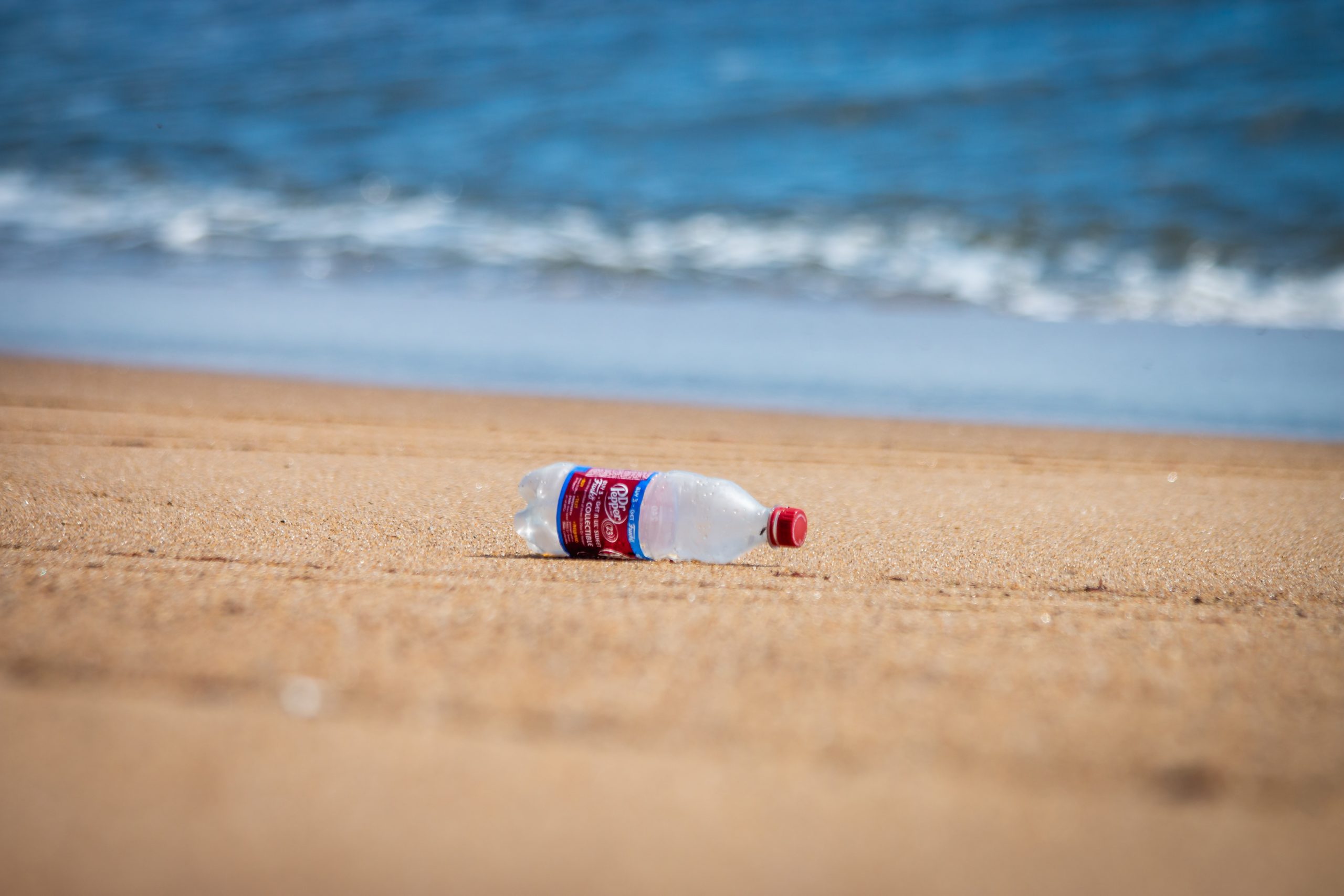
It is estimated that people in the UK use 5m tonnes of plastic every year, around half of which is single-use. Recently, however, there has been a rise in alternative packaging options, from bio plastics, to compostable plastics, to plastic alternatives, such as glass and metal.
Single use plastics are problematic because they are notoriously difficult to recycle, and because we make so much of it. We create around 300m tonnes of plastic waste each year with 5m to 14m tonnes of that ending up in the ocean. Because of the sheer amount we produce, plastic is everywhere, from the top of Mount Everest, to the Mariana Trench, to our own drinking water.
Plastic is a whole category of materials, and only a few types (PET and HDPE) are easily recyclable in most areas. Contrary to aluminium, however, which is infinitely recyclable, plastics can only be recycled a limited number of times. Because of this, and the fact that virgin plastics often have to be added to reuse recycled plastics, they’re usually downcycled, limiting their lifespan. But, theoretically, the above types of plastic are recyclable, if only a limited number of times.
Other types of plastic, such as LDPE (thin film plastics) are extremely difficult to recycle, and in most cases should not be put in curbside recycling, as it can damage recycling plants. Putting these into the recycling bin can do more harm than good, as they can clog up recycling machines, and the people at the plants have to pay to have them removed, further lowering the profitability of recycling. Some film plastics, such as plastic bags, bread packaging, frozen food bags, some crisp packets etc can be recycled at specialist recycling centres. The best thing to do with these (if they are unable to be reused) is to store them up and then take them to large supermarkets for recycling. More and more supermarket chains in the UK provide this, so take a look next time you go!
Needless to say, these are not perfect solutions, with the amount of single use plastic still at a historical high. However, the use of ‘alternative plastics’ has exploded in recent years, with ‘bioplastic’ production set to quadruple between 2016 and 2021. So what are these alternative plastics, and are they better than our current solutions?
There are lots of varieties of alternative plastic, with more being made each day. There are two key labels – bioplastic and compostable – that many put on their packaging as evidence of their ‘greener’ nature. However, the environmental thinktank Green Alliance suggested there was evidence that by using terms such as ‘biodegradable’, customers were more likely to discard items into the environment, making pollution on land and at sea even worse.
Bioplastics are a diverse group of materials, and the term has several meanings. They can be made from plant-based sources such as starch, oils, cellulose etc., but are not necessarily biodegradable. These ‘bio’ building blocks can be used to create non-biodegradable plastics that behave in exactly the same way as conventional plastics – just because ‘bio’ is in the name does not mean it is biodegradable. Coca Cola’s PlantBottle, for example, though partly derived from sugarcane, is chemically identical to hard-to-breakdown PET bottles. So, it can be recycled, but it won’t break down for centuries if placed in compost. Equally, the term bioplastic can refer to plastics created from fossil fuels which are made to be biodegradable. The term is used for a wide range of materials that do not necessarily all behave in the same way – see the graph below (WRAP).
Then we have compostable plastics. Thankfully, there is an industry standard that plastics must meet to be deemed ‘compostable,’ which ensures they can decompose/biodegrade in industrial composting conditions. Not all biodegradable plastics are compostable, but all compostable plastics are biodegradable, in the right conditions. What this does not mean is that they can be placed in household composting – these products must be specifically labelled ‘home compostable’. If placed in the wrong bins, these plastics could do more harm than good. Vegware, for example, must be composted industrially for it to biodegrade. It cannot be recycled, and will not biodegrade in your home compost. If you can’t send it to be industrially composted, it should be placed in your normal landfill bin.
Because of this, many of these alternative plastics are best limited to closed environments where post-use collection is possible, e.g. in a restaurant, university etc. Otherwise, they’re no better (perhaps even worse!) than conventional, recyclable plastic. Any plastic that evades appropriate collection and treatment systems and instead makes its way into the environment has the potential to have long-lasting negative impacts. Jo Ruxton, cofounder of Plastic Oceans, shares that even biodegradable plastics can take years to break down at sea. “They can be mistaken for food and ingested, they can entangle animals. They can do everything that plastic does – they just don’t last as long.”
As always, reducing plastic consumption is the first step to solving the problem. If you have less waste, you don’t have to worry about which bin it can go into. Producing more single use alternative plastics will only exacerbate the problem, contributing to our single-use lifestyle and adding to the confusion. See if you can opt for circular schemes, such as Loop, and refillable models.
Reusing plastics is the next best option. Butter tubs can be useful for storing wires, screws and other miscellaneous goods. Bread bags are great to use instead of new ziplock bags or sandwich bags. Plastic bags can be reused again and again for shopping. Make sure every item has the longest life possible before making its way to your bin.
Recycle the plastics you can recycle, compost the ones that you can compost and make sure everything else makes its way safely to your bin – do not let it get into the environment!
Beyond this, it’s important to push companies to create less waste to begin with. If you have a company you love, send them an email to let them know that you’d love to see them move away from single use plastic packaging. Check out the Break Free From Plastic campaign and Plastic Patrol, who are working to hold brands accountable for the waste they produce. Use your voice and your vote to influence governments.
There is a lot we can do individually to enforce change, both at home and country-wide, and it starts with individual action. Knowledge is power, so share this article with others so that together we can have a profound impact on the environment around us.

Palau is a place leading the charge when it comes to environmentally conscious travel, pioneering a new model in sustainable tourism. They’ve been ahead of the curve for a while now, with the government having established one of the world’s largest marine sanctuaries, as well as banning tour operators from utilizing single-use plastics and Styrofoam. With the help of Sustainable Travel International, since 2020, they have also been protecting its marine environment through the adoption of the world’s strictest national sunscreen standard.
Now, Palau Bureau of Tourism has recently launched a new project, pulled together with the aim to mitigate its tourism-based carbon footprint. The organisation has partnered with Sustainable Travel International and Slow Food, and is looking to develop a transparent carbon-management plan. According to a report by the Palau government, climate change has been recognised as the greatest challenge for the sustainable development of Palau. ‘Thus the climate change policy cuts across all aspects of sustainable development.’
It’s perhaps not surprising that, as a remote island nation, made up of an archipelago of 500 islands in the western Pacific, the Republic of Palau is under threat from climate change. Rising sea levels are a terrifying concern, as well as over and high-volume tourism (or tourism without conscious awareness, at least). In fact, over 25 per cent of Palau’s landmass sits under 10 metres above sea level, and The Green Peace Islands in Peril report estimates that several of Palau’s inhabited islands may disappear within the next 100 years.

With sea levels rising, intensified tropical cyclones and weather bringing increasing threats, the infrastructure of Palau has to adapt. That’s not to mention the fact that coral bleaching endangers marine life and the beauty that tourists want to see, and that climate change could disrupt supply chains, leading to food insecurity.
It’s for this reason that Palau is taking action. Tourism is Palau’s main industry, so it’s vital to maintain and develop this, and support this in every way possible. To put it into perspective, in 2019, more than 89,000 international tourists visited the country, which has a population of just fewer than 22,000. The United Nations Development Programme states: ‘Tourism is the country’s economic base and is an extremely important industry, contributing US $67 million, or 47%, of its Gross Domestic Product (GDP).’
But, it’s also crucial for us to recognise that tourism is ultimately driving forward the negative impacts of climate change. Tourists fly in from overseas so, of course, fossil fuels are increased and most of these tourists consume overseas imports, causing dollars to leave the local economy. In fact, 85-90% of the country’s food is imported from abroad, producing carbon emissions.

According to the Palau government report, ‘policy concern remains the need for finding a balance between utilizing the natural environment as a driver of economic growth for tourism, and preserving the environment for the cultural, social and economic well‐being of current and future generations and for future tourism development.’
So, what will the project do and how will it work? Excitingly, it is taking an innovative destination-level approach that includes promoting local food production within tourism and developing a carbon management program for tourists – breaking ground with this initiative in the hope that it inspires other destinations.
As part of the initiative and as a beautiful, almost poetic, way of ensuring people declare something worthwhile at customs, Palau is the first nation on earth to change its immigration laws for the cause of environmental protection. Upon entry, visitors need to sign a passport pledge to act in an ecologically and culturally responsible way on the island, for the sake of Palau’s children and future generations of Palauans. Children from all over Palau helped draft it and as the initiative continues to reach out to Palauan businesses, they’re continuing to work with the next generation of Palauans to shape and develop the pledge.

Similarly, to compensate for tourism’s unavoidable emissions, the project will develop a first-of-it’s-kind carbon management programme for tourists to Palau. This will be in the form of a new online platform, on which visitors can calculate and offset the carbon footprint that is associated with their trip. These offset contributions will work harmoniously with Palau’s marine conservation, and will be invested in blue carbon initiative such as mangrove restoration. It is estimated that this unprecedented move has the potential to raise over USD $1 million a year for these carbon reduction initiatives.
In response to the need to encourage regenerative tourism as well as sustainability, the project will increase the proportion of food sourced from local producers and work to reduce the hospitality industry’s dependence on imports. It will also celebrate the islands’ gastronomic heritage, build the capacity of local farmers and fishers and create income-generating opportunities for local communities.
‘The rapid growth of an unsustainable tourist industry based on broken food systems has been a key driver of the climate crisis and ecosystem destruction,’ says Paolo di Croce, General Secretary of Slow Food International. ‘This project represents the antithesis, a solution that strives to strengthen and restore value to local food systems, reduce the cultural and environmental damage caused by food imports, and improve the livelihoods of food producers both in Palau and beyond.’
With such enormous potential to turn the tide on climate change and act as a visible roadmap for other destinations to follow suit, there is a real chance this could inspire others to look at their climate resilience strategies.
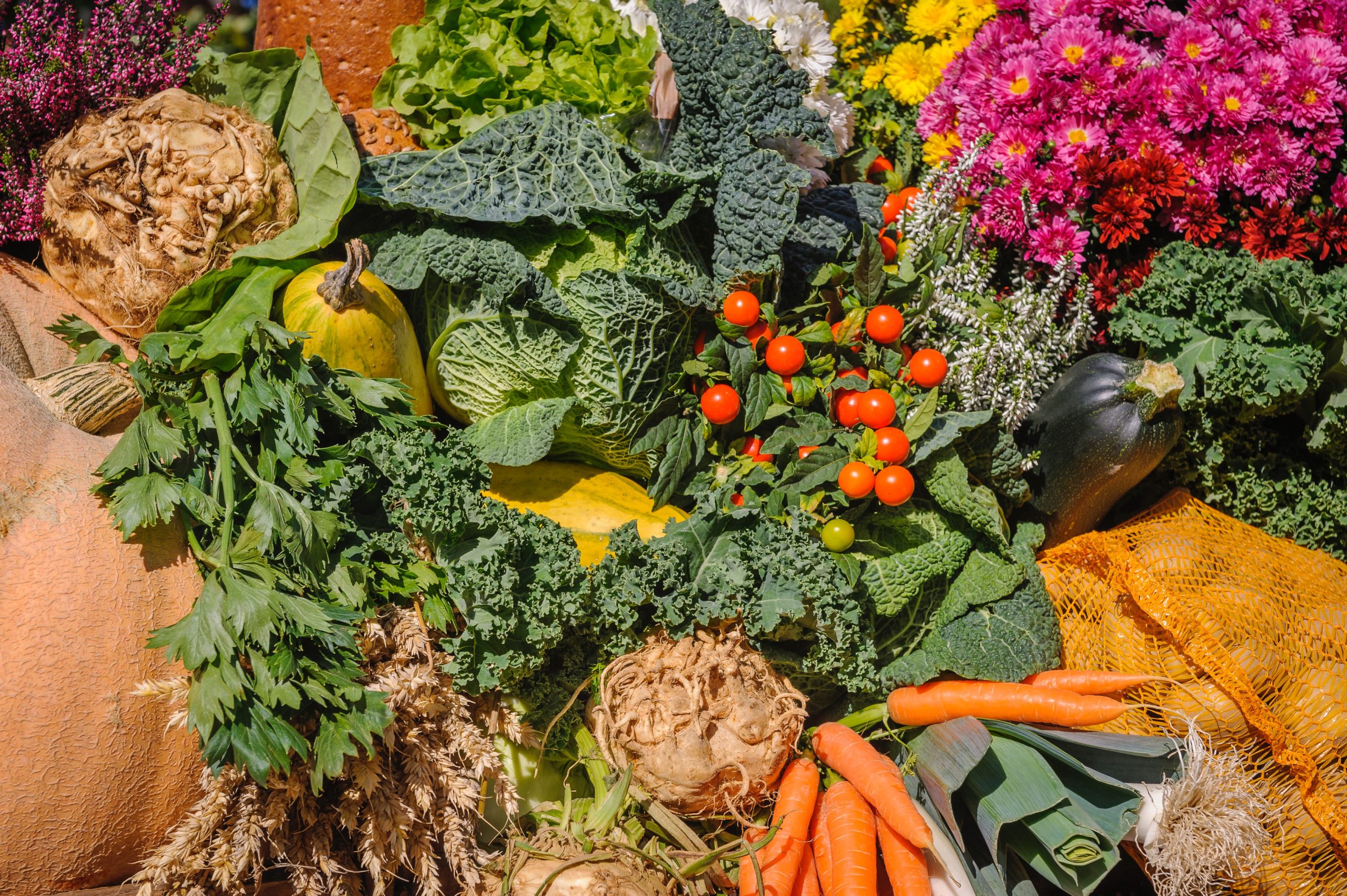
As we inch towards spring here in the UK, we move ever closer to the ‘Hungry Gap’, a time that spans much of the spring where there is little to no fresh produce available to harvest. Winter-harvested vegetables, such as carrots, potatoes, kale, turnips and swede have all been harvested, and spring crops such as asparagus and broad beans are yet to come through. There is a reason British-grown asparagus is seen as a sign of the warmer days – it is one of the earliest spring vegetables to be harvested.
Despite its limitations, seasonal eating is making a comeback, with multiple companies dedicated to delivering fresh, local produce to your door and many people willing to spend considerably more for locally produced, seasonal food. There does, however, seem to be a divide between those looking to shop seasonally, and everyone else. A survey by the BBC suggested that whilst 78% of Brits claim to shop seasonally, only 5% could name when blackberries ripen in the UK. In addition, it seems not all of us are even aware what ‘seasonal’ and ‘local’ means anymore, so where do we begin, and what are the benefits?
According to Wikipedia, “Seasonal food refers to the times of year when the harvest or the flavour of a given type food is at its peak. This is usually the time when the item is harvested, with some exceptions; an example being sweet potatoes which are best eaten quite a while after harvest”. Seasonal produce tends to be foods grown ‘locally’ at the time of year that they have traditionally been abundant, without the aid of artificial heating.
Arguments for seasonal eating include better tasting produce, more nutrients, supporting the local economy, reducing environmental footprint and paying less for food. Food systems are complex though, and not all of these factors stand up to scrutiny. For example, depending what you’re looking to buy, it may be more environmentally friendly to transport (by road) some fruit and vegetables from Europe, due to the warmer growing conditions negating the use for artificially heated greenhouses. Thankfully, the energy demand for UK grown vegetables is generally lower than their imported equivalents, aside from a few notable exceptions, such as aubergines, cucumbers, peppers and tomatoes which are often grown in heated greenhouses in the UK.

Despite the complexity of our food systems, it can be good to support local farmers and the produce they produce. If you are also buying from small farms, you’re likely to get a variety of produce you might not find at your local supermarket. Buying from local farms may also help boost the economy in the area – important especially at a time like now, where many are struggling.
When eating raw/fresh produce, local and seasonal vegetables may taste noticeably better and may even be more nutritious. Foods that are able to be picked when fully ripened (as opposed to harvested early so they can be transported further) may be higher in nutrients, and thus have a better flavour. If you are eating a lot of foods raw or unflavoured, this difference in flavour alone may mean it is worth picking up local produce over imports.
Cabbage, celery and Brussel sprouts are the most sustainable UK produce you can eat, and should always be consumed in season if possible. Aside from that, importing vegetables grown in unheated greenhouses in Europe has a lower impact than UK vegetables cultivated in heated greenhouses (e.g. aubergines, cucumbers, peppers and tomatoes), despite the transportation – so if you are eating produce out of season, make sure you know how it was grown. If there’s the chance it was grown in a heated greenhouse, it may be better to opt for food grown in Europe that has been transported to the UK by road.
Air freighted vegetables have around a five times higher impact than domestic produce, so in the case of a choice between locally produced vegetables and those air freighted, always choose local produce.
It is important to bear in mind that despite all these variables, eating vegetables is always more environmentally friendly than eating red meat when it comes to greenhouse gas emissions, and the confusing nature of food labels should not put you off eating a mostly plant-based or diet. It can be easy to become bogged down in the specific of in season or local produce vs importation, but there are a few changes you can make to your diet that will have far bigger impacts in the long run. For example, plant-based diets are the best suited to fight climate change, so if you eat a lot of red meat, cutting down will have a far bigger impact environmentally than purely eating locally.
In addition, food waste is one of the worst culprits for increasing food impact on our environment. Reducing food waste overall, rather than focussing on purely buying local produce, may have more of a beneficial impact on our environment. 4.2 million tonnes of avoidable food and drink is wasted each year in UK households, worth £12.5 billion.

In conclusion, there are many benefits to eating local. Eating food in season may taste better and be more environmentally friendly, but even more importantly, it can help support local farmers and their families, support the local economy and may even introduce you to produce you’d never see in your local supermarket.
However, there are other ways in which you could have a greater impact when it comes to carbon emissions and environmental impact. Moving to a more plant-based diet and reducing food waste overall will help you see the greatest reduction to your environmental impact!

We’ve known for a while that fashion is a significant contributor to carbon emissions — in 2015 polyester production alone was responsible for 700 million tonnes of CO2 and in 2016, projections under a “business as usual” scenario saw fashion on track to increase carbon emissions by 49% by 2030. Even with COVID thrown into the mix, it’s showing no signs of slowing down — while the industry needs to cut greenhouse gas emissions by 1.1 billion tonnes by 2030 to be in line with the Paris Agreement, in August McKinsey found that we’re actually on a trajectory to overshoot this target by almost twofold.
The mounting evidence of a link between the pandemic and the climate crisis has helped push forward the carbon agenda, believes Luke Gaydon, co-founder of Terra Neutra, a consultancy launched in 2019 that offers, among other things, carbon offsetting products. “It’s easy to look at bushfires in Australia and the Amazon or flooding in Bangladesh, and think it’s quite a long way away. But COVID is on our doorstep,” he says. “If you think about the news headlines, obviously COVID, the US elections and Brexit have dominated it, but the environmental agenda has still managed to stay at the forefront of media coverage in spite of all those things.”
While a growing media coverage has certainly helped raise awareness among a wider audience, it’s evident that education, particularly when it comes to fashion’s carbon footprint, is still lacking. “People are engaged with this as an idea, the notion of their own footprint, taking responsibility for it and working out how to reduce it, but a significant majority of people are still unaware of the extent to which their daily lives are carbonised,” says Gaydon. “Do they think that air travel produces harmful emissions? Yes, that’s a given. Do they make the connection between their carbon footprint and the shirt that they bought yesterday? No, the majority of people don’t, so there is still a big job to do just to raise people’s awareness of that basic fact.”
Considering 70% of greenhouse gas emissions are produced through the supply chain’s hidden activities like material production, preparation and processing, it’s no wonder that consumers don’t know the full extent of the issue. “There is a lot of nuance when it comes to fashion and sustainability,” says Pauline Op de Beeck, Fashion Sector Lead at the Carbon Trust, a sustainability consultancy that works with businesses, governments and organisations towards a low carbon future. “Arguably, it’s way too much information for a clothing tag, so that’s why there’s a lack of information.”
“I would like to see mandatory labeling of products to create that awareness of the link between something I buy and my carbon footprint. There’s nothing like putting a price on something for people to understand: there is a cost.”
At the start of the year, the Carbon Trust released a report in conjunction with fashion tech platform ORDRE that uncovered the carbon footprint of fashion weeks, finding that each year the industry emits 241,000 tonnes of carbon emissions from travel alone. While this is just a fraction of the problem, it proves a point. “That report speaks more to the structure of the industry, that it’s something to be questioned, rather than this being the biggest impact in the sector,” says Op de Beeck. “Fashion shows are a close to home example of how the entire system needs to be rethought.”
Nevermind getting consumers up to speed, fashion businesses themselves are only now starting to face their carbon footprint. “Until COVID, many brands probably didn’t think carbon was going to be important for them,” says Op de Beeck. “Two years ago, carbon was something only the very large businesses were leading on, but now it has really trickled down into all brands, and COVID has really made that difference.”
The trouble is, even for proactive businesses that want to reduce their carbon emissions, the process is time consuming, expensive and fraught with challenges. Genia Mineeva, who founded her accessories label BEEN London in 2018, has built a business that designs with zero waste, uses recycled materials, and is locally made in east London, a few suburbs away from their studio. Naturally, understanding the brand’s carbon footprint is an important part of the sustainability journey for Mineeva.
This desire to learn more led to a partnership with Terra Neutra, who spent several months this year performing a Life Cycle Assessment [LCA] of BEEN’s best selling Columbia bag, comparing its footprint to a high street equivalent bag. “Terra Neutra were looking for a brand that didn’t have anything to hide and we were looking for someone to do [an LCA] for us, because we wanted a tool that would allow us to do better,” explains Mineeva. “We ship everything by sea and we use only recycled materials, but what happens if we replace the recycled polyester lining with recycled cotton lining? What if we change our supplier from a Turkish to an Italian supplier? I wanted a tool to look at the bigger picture so we could see the red flags and go: this is the area of our supply chain where we really do better.” The results were impressive. While the initial estimate was that BEEN’s bag would have 1/3rd of the impact of a high street bag, final calculations found the reduction was actually 1/10th of the impact — it was 87% less environmentally damaging.
“The difference between buying one of our bags and buying the high street equivalent is the same as leaving the lights on for a year,” says Mineeva.“You would think that anyone would be interested in finding out their carbon footprint, turns out no! We knew most of the language and the concepts, but even then it was difficult. We had to convince our suppliers, one of them being one of the most celebrated sustainability leaders…it wasn’t easy, but it was 100% worth it.

Partnerships between small transparent businesses like BEEN London and Terra Neutra provide useful case studies, but to ensure scalable industry-wise change, there are a few things that need to happen, and fast.
For a start, legislation is urgently needed, says Gaydon. “The more that the fashion industry can align around a set of labels or accreditations, the better,” he says. “Having brands mark their own homework is not the way to go — not because I don’t trust them to do it properly — but because consumers won’t and then the integrity of the whole thing is thrown into question.” He’s right — a recent Compare Ethics report found that only 18% of UK shoppers trust a brand’s sustainability claims on face value. “This is not something we should be letting the free market decide,” continues Gaydon. “People say the markets will work it out, but I’m not willing to trust them to do it. I think the government has a critical role to play and it’s in regulation and legislation. I would like to see mandatory labeling of products to create that awareness of the link between something I buy and my carbon footprint. There’s nothing like putting a price on something for people to understand: there is a cost.”
Secondly, the industry must acknowledge that aiming for carbon neutrality, largely achieved by off-setting carbon emissions, is the bare-minimum requirement needed to mitigate fashion’s carbon footprint. “I see our responsibility to our customers is reducing first and offsetting second,” says Mineeva. “But you can’t reduce until you have a full knowledge of every move you make as a business. It’s all great to add an offsetting option, but that alone is not a solution.” Gaydon believes that reframing the conversation to focus on carbon positivity rather than neutrality is more aspirational. “Net zero is brilliant, carbon neutral is brilliant, balancing the books is brilliant,” he says. “But as a goal and challenge that everyone can get behind, neutral and net zero don’t get me energised and enthused. Whereas carbon positive — you’re actually doing that bit more.”
Op de Beeck believes there is value in both approaches, as part of a multifaceted solution to fixing the industry. “For me, the most important thing is not whether a company sets a carbon neutral target or a carbon positive target,” she says. “It’s actually, what is the level of ambition of the decarbonisation plan? Ultimately, if you’re not reducing your emissions in line with the Paris Agreement, then you’re not changing your business model, you’re just planting trees to keep your business model intact.”
COVID has exposed how fundamentally unbalanced and unfair the relationship between a brand and its suppliers and manufacturers can be. When the pandemic hit, many brands began holding and cancelling orders with their garment factories because their contracts gave them all the power and none of the responsibility of their supply chain. Not only did this create a humanitarian crisis, but at its core, it showed the complete lack of investment — both emotional and financial — that brands put into their supply chains.
Investing in supply chains would begin to solve multiple issues, including carbon emissions produced through the manufacturing process. “Fashion is set up with really short term contracts with suppliers, brands often go from supplier to supplier, so it’s very difficult to invest in them if you only work with them for one season,” says Op de Beeck. “I think the structural issues around buying need to change so that brands can see the long term benefit of helping their manufacturers switch to renewable energy or invest in energy efficient equipment, because that will eventually reduce the costs of manufacturing. But that’s a cost the manufacturer can’t afford to make because it never has any guarantee on its contracts.”
“Ultimately, if you’re not reducing your emissions in line with the Paris Agreement, then you’re not changing your business model, you’re just planting trees to keep your business model intact.”
In both the near and distant future, technological solutions to the carbon crisis are on the horizon. Terra Neutra, for one, is looking for a way to translate the carbon assessment they did for BEEN London into a wide scale tech offering. “At the moment, it’s effectively a consulting engagement driven by humans, so you have a scalability issue there,” says Gaydon. “But if we can find a way of really making it much more accessible and a lot less operationally intensive for the companies, essentially make it digital, then I think that could be transformative.”
Other tech innovations require a little more blue sky thinking. Take Recycling Revolution, co-funded by H&M and the Innovation and Technology Fund of Hong Kong. The project’s ambitious Green Machine, which will begin commercial operation in 2021, can separate cotton and polyester to create new cellulose fibres, which can then be spun into new garments. There is huge potential for this technology to change the way we buy and recycle clothing, says Op de Beeck. “If you had a personal carbon budget, then arguably you could buy a lump of material once and for the next 5 to 10 years change the design of that,” she says. “We’re talking high level concepts here, but it’s not to say that it’s not possible, it exists now but it just takes 5 hours to do.”
Whatever the solution, it’s going to take a multi-stakeholder approach to get fashion on track to reduce carbon emissions in line with the Paris Agreement. From businesses analysing and tweaking their operations, governments introducing legislation that keeps brands transparent, technology transforming old clothing into new, as well as consumers getting more savvy about our clothing, both small and large scale solutions are out there. “We’re very optimistic about what we can achieve,” says Gaydon. “We’re excited about the growing level of awareness and desire to take positive action, be that individual consumers, the corporate sector and government. Optimism is one of our company values, but I genuinely do feel like there is increasing momentum that keeps increasing behind this movement.”

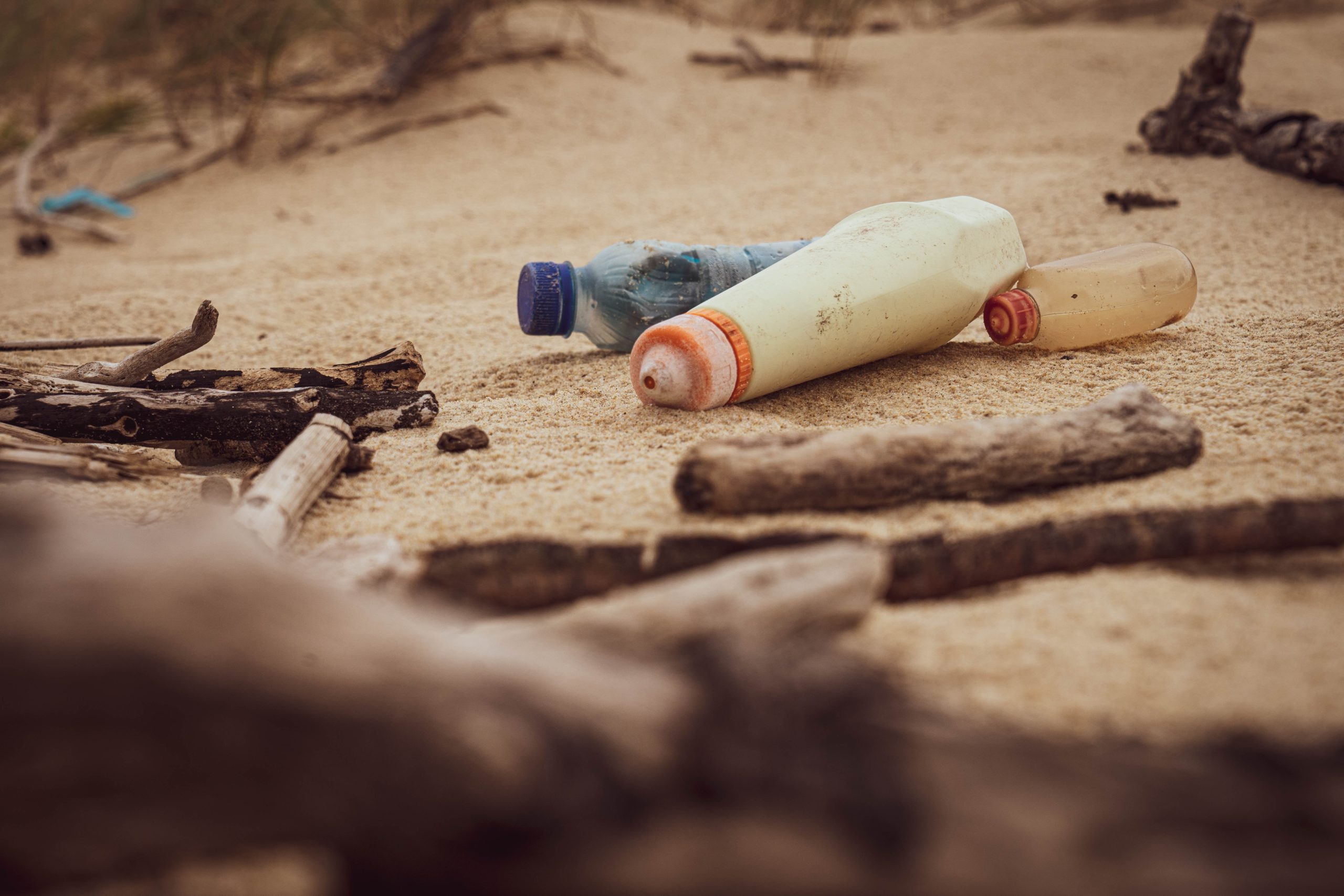
Recently we delved into fashion’s waste problem and the innovators looking to change it. We have seen that the fashion industry has exploded in recent decades, and demand for new clothes has led to a surplus of waste fabrics at every stage of production, from factory offcuts to post-consumer waste in landfills.
However, waste comes in many forms, and the process of producing clothes leads to a lot of it in every conceivable manner. The source of water pollution and waste in the fashion industry is threefold – large amounts of fertiliser to grow crops for clothes, chemicals used to treat clothes and microfibres released once those clothes are washed. The textiles industry relies mostly on non-renewable resources – 98 million tonnes in total per year – including oil to produce synthetic fibres, fertilisers to grow cotton, and chemicals to produce, dye, and finish fibres and textiles. The fashion industry also contributes to 20% of wastewater production globally, polluting waterways and damaging ecosystems.
This extensive use of hazardous substances in textile production has negative effects not only on local wildlife but also the farmers that harvest the raw materials, factory workers who work them, and locals whose environments are permanently polluted. Unfortunately, there is a lack of knowledge or research into the sheer volume of hazardous chemicals that are used in the textile industry. Sadly, as with so many industries where labour is outsourced to other countries, especially the Global South, out of sight really does mean out of mind. Despite growing concerns raised by NGOs, the public, policymakers, and across the textiles value chain itself, there is very low transparency on the chemicals used across the industry, making the true scale of the pollution – and its associated economic, environmental, and societal impacts – difficult to evaluate. Improving knowledge of what goes into our clothes and how we can better choose what we buy is vital to changing this.
Annually, 43 million tonnes of 8000 different types of chemical are used to produce textiles. However, there is a remarkable lack of understanding about the chemicals that go into textile production and the effects they have. Despite this, many have been found to be carcinogenic or hormone-disrupting, likely harmful to the factory workers who are in contact with them on a daily basis and the waterways into which they are disposed. Many of the chemicals are also known to bio-accumulate: they become more concentrated over time in the environment, posing increasingly greater risks the longer they are in the environment.
Substances used in the production of clothes often stay in the clothes after they are made and sold, meaning that they work their way to the consumer too. Not only does this spread the issue of water contamination far and wide, but also has led to reports of allergic reactions, respiratory diseases and loss of aquatic life. Needless to say, it is in everyone’s best interest to better understand and then better control what substances are used in the making of our clothes. A 2017 report estimates that eliminating today’s negative health impacts due to poor chemicals management in the industry would have an economic benefit of EUR 7 billion (USD 8 billion) annually.

Synthetic clothes also release microfibres when they are washed and as we buy an increasing volume of synthetic fibres, this issue intensifies. It has been estimated that around half a million tonnes of microfibres are released into waterways during the washing of plastic-based textiles each year. This is a preventable problem – filters built in to washing machines could trap the majority of these, to be disposed of safely – but this would take legislative change that governments don’t seem willing to make.
As the use of synthetic fibres such as polyester (which currently makes up 60% of fibres used in clothing) grows, not only will we perpetuate the demand for fossil fuels and other non-renewable resources, we will also contribute increasingly to a non-biodegradable environmental disaster in our oceans and waterways. As with many chemicals, microplastics such as these are persistent in the environment (they take a long time to break down), and accumulate up the food chain, leading to deaths of animals such as seabirds, whales and dolphins by starvation – they fill the stomach but provide no actual nutrients, leading to death or severe illness.

Buy less, buy better
The best thing to do to reduce your contribution to fashion waste is to buy as infrequently as possible and use what you already have. Buy second-hand and from sustainable brands, or swap clothes with friends. Only by reducing the demand for clothes can we reduce the amount created.
Look for accreditations such as OEKO-TEX and GOTS
There are some accreditations that offer third-party auditing of supply chains to ensure only non-harmful dyes and treatments are used. Two of the best known are OEKO-TEX and GOTS. These often also look as social criteria and set ethical standards too, so you know clothes with these are likely made with ethics and sustainability in mind.
Avoid synthetic clothing
Organic cotton and linen are not without their own issues, but these products avoid the use of excessive chemicals in their production and have the added benefit of not releasing microfibres when placed in the wash.
Use a Guppyfriend bag
If you have a lot of synthetic clothing, such as sportswear, that you wash regularly, invest in a filter for your washing machine. One of the most effective is Guppyfriend, a bag to place your laundry in that will collect microfibres released from your clothes to be safely disposed on in landfill, instead of being released into waterways.
Campaign and lobby brands
Many brands get away with having no transparency and poor working conditions. Campaigners and groups such as Fashion Revolution have forced brands to improve transparency and have led to changes in the clothing production process. Use your voice on social media and via letters and petitions to force brands to be open about who their workers are, how they’re treated and what working conditions are like. Avoid brands that are resistant.
Vote
There is a lot we can do individually, but without legislative changes (e.g. banning the use of certain chemicals, introducing filters on washing machines etc), there’s only so much that will happen. Many of us are privileged enough to spend more to shop with sustainable brands, but that isn’t the case for everyone. Voting for a government who will hold brands and businesses to account when it comes to their environmental footprint will have far more impact than individual action.
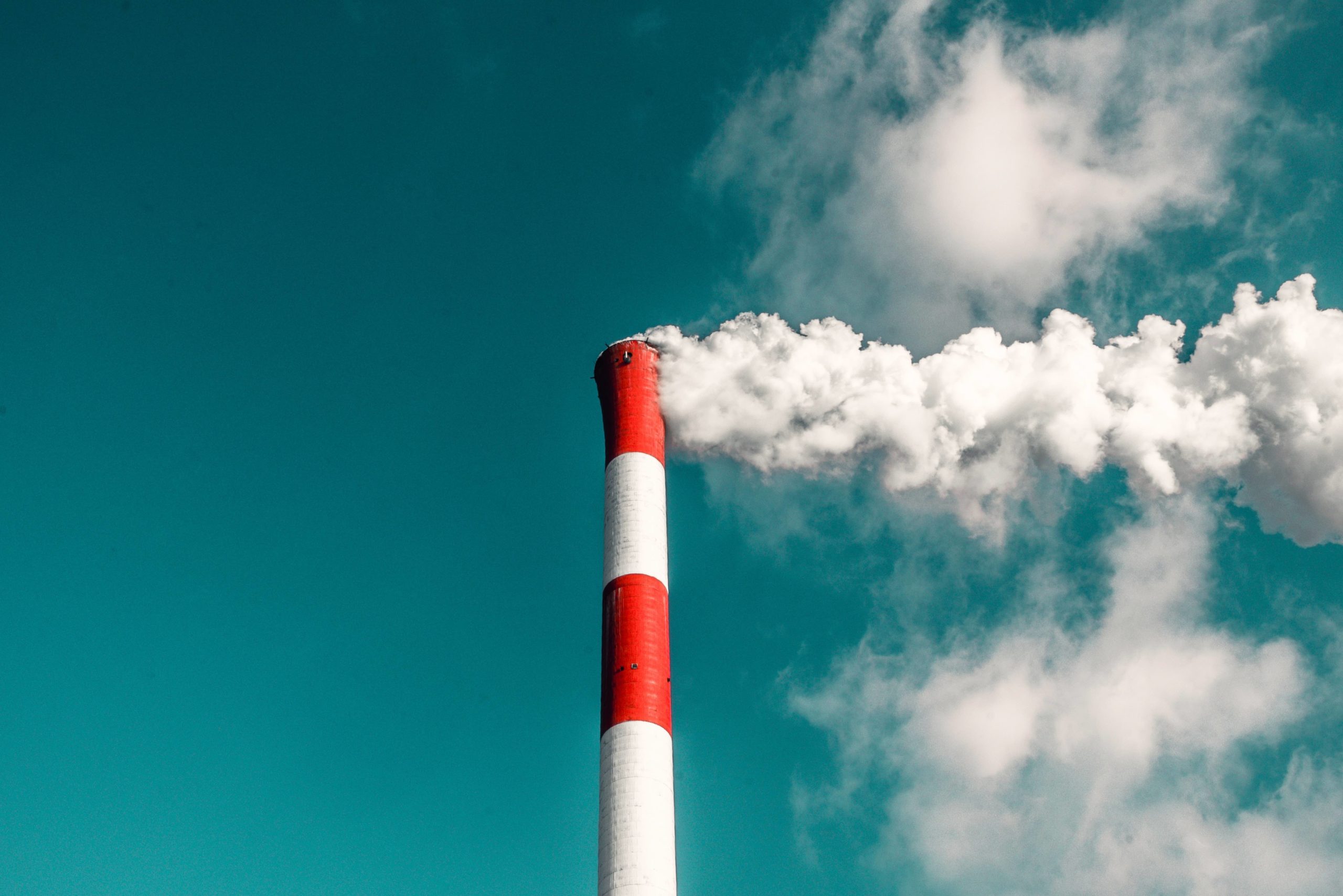
The World Health Organisation and the UK Government recognise air pollution to be the largest environmental health risk we face today. While plastic pollution has been front and centre of recent pollution concerns (with good reason), this other insidious and oft overlooked type of pollution continues to cause deaths around the world.
With Coronavirus top of the health agenda, many other health concerns have been pushed aside, especially those we cannot see, such as the air we breathe. Air pollution has caused more deaths than COVID this year, and yet the issue has been easily ignored by the world’s politicians. This is not to downplay the impact of COVID or to compare the two concerns, but more to raise awareness of the sheer number of deaths that continue to occur year on year due to pollution and its related diseases.
Those most impacted by pollution (MAPA – most affected people and areas) are often those least contributing to the problem globally, specifically those with lower socioeconomic status (SES). Unfortunately, the impacts of environmental health hazards such as air pollution continue to disproportionately affect those from lower SES communities, making them disappointingly easy for governments to ignore. When it comes to pollution, young children, adults and households in poverty have the highest levels of exposure, despite there being an inverse relationship between poverty and emissions generation (i.e. people who live in poverty have lower emissions). This is therefore an environmental justice issue and requires a collective global response.
In the UK, pollution is a bigger killer than smoking, and costs the UK economy over £20bn per year. The biggest culprits are Nitrogen dioxide (NO2), emitted mainly by diesel vehicles, and PM2.5, fine particulate matter linked to adverse health effects. In Europe the toxic air is causing more than 1000 premature deaths each day from PM2.5 – a figure which is 10 times higher than the number of deaths from traffic accidents. A recent study by King’s College found that adults living within 50 meters of a busy road parameter had an increased risk of lung cancer by 10%, and children suffered from stunted lung growth by 3-14%. To put this in perspective, around a third of Londoners (about three million people) are thought to live in these high-risk areas.
Some work is being done, however, to reduce the amount of pollution affecting people around the UK, especially those living in cities. A coalition of 15 health and environment NGOs are calling for legal levels of particulate pollution to be reduced to the limits indicated by the World Health Organization by 2030. At the moment, current UK legal limits for PM2.5 are more than double this, and no political party has committed to bringing levels down to the WHO suggested limit by 2030. Thankfully, studies suggest that pollution levels drop rapidly in response to pollution-reducing measures and events, for example during the 2019 Extinction Rebellion protests, or throughout various Olympic Games. In fact, data collected by Centre for Research on Energy and Clean Air suggests that the incidental reduction in pollution at the start of the coronavirus pandemic prevented approximately 15,000 deaths. This gives some hope that any measures implemented to reduce city pollution levels will have immediate beneficial effects even within the space of a number of days. In the meantime, these are a few ways you can reduce your exposure to air pollution.
How can we protect ourselves and others against pollution?
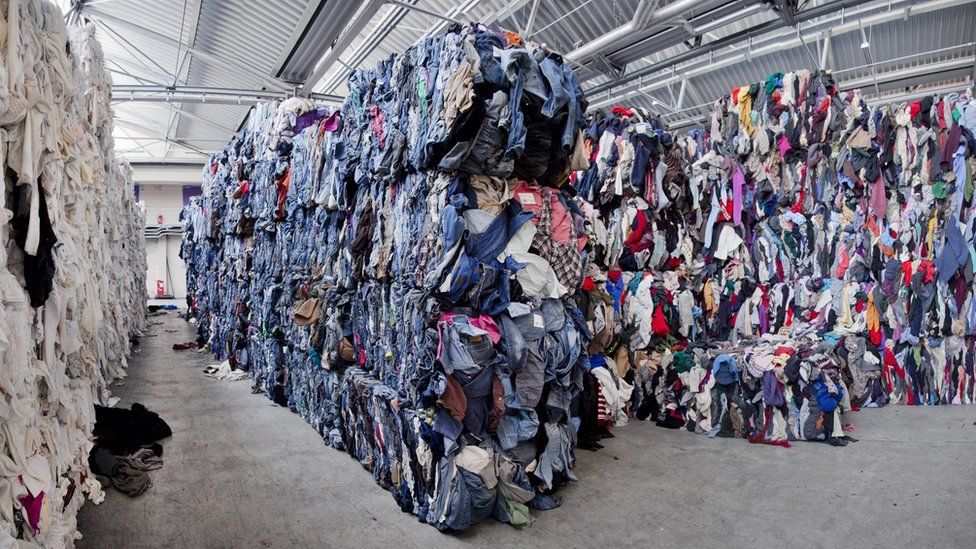
Anyone with half a foot in the sustainability world will be aware of the issues the fashion industry poses.
Over the space of two articles, we will explore the issues present in the fashion industry, from waste to chemicals, and the innovators looking to change it.
In the last 15 years, production rates have doubled in the fashion industry, in part thanks to new attitudes, particularly among the middle classes, towards the value of clothes. It’s a self-perpetuating cycle. Clothes are cheaper than they have ever been, meaning they are worth less to the consumer, meaning the consumer can generally afford to be more wasteful and buy more, reducing their value further. These has led to a reduction in the amount of time each item is worn by about 40%. The average lifespan of an item of clothing is now just 2.2 years, worn an average of just 7 times.
Wasting clothing is problematic for several reasons. Many types of clothing are created from valuable natural resources, which use energy, space and water to grow. For example cotton, one of the more sustainable fabrics used in our clothing, uses up to 20,000 litres of water for a single t-shirt by some estimates. In fact, nearly 20% of global waste water is produced by the fashion industry.
Needless to say, using up so many natural resources, labour hours and, of course, money for a product simply to be thrown out is immensely wasteful. Much of the clothing we wear nowadays is created using synthetic fibres, which are essentially fossil fuels. Again, wasting these items at any stage of the production process or post-consumer means an increase in non-biodegradable fabrics making their way to landfill, or being incinerated – both of which are harmful to our environment.
The methods of production for any item of clothing can be immensely damaging too, so maximising usage of fabrics and clothing and extending the time it remains out of landfill is in intrinsically beneficial, both to the environment and to us. According to WRAP, £140 million worth of used clothing goes to landfill in the UK each year – that is a lot of wasted resources and money.
So what happens to our clothes after we dispose of them? Unfortunately, in the UK, 73% is burned or sent to landfill. 12% is downcycled into mattresses, cleaning cloths, insulation and other low-value items. Just 1% is upcycled into new clothing – meaning the fashion industry is missing out on a shocking $100bn worth of pure materials each year, as well as the high costs of disposal on top of that. Even the best-performing countries, such as Germany, only reuse around 50% of disposed clothes – the rest may be downcycled or end up in landfill abroad. There is a lot of room for improvement. This is only post-consumer waste, but the consumer is certainly not the only one at fault here. What about pre-consumer?
Pre-consumer waste refers to the hundreds of thousands of tonnes of fabric that is wasted at each stage of production before it is purchased by the consumer. This could be surplus material from cutting patterns, surplus stock (brands over order by around 3-10% to avoid running out of stock, other brands burn stock to avoid ‘damaging the brand’) or faulty items from printing/weaving mistakes. Of the 1,100,000 tonnes of fabric wasted in the UK in 2016, 73% of this was pre-consumer, at a huge 800,000 tonnes.
As with many environmental issues, while the onus is often placed on the consumer to make better decisions and be less wasteful, in reality much of the issue lies in holding brands and governments to account.
The sheer amount of fabric, both used and unused, that goes to waste globally is a great business opportunity for many. There are some great examples of brands specifically looking to reduce both pre and post-consumer waste in the industry. Find below some of many examples:
PATAGONIA has a Worn Wear policy that allows customers to send in old clothing to be repaired or replaced as needed. This is a brand that trusts in the longevity of its product and champions fixing items, rather than disposing of them.
NUDIE JEANS, along with multiple other brands, provide free repairs of their jeans, so technically they could last forever. This is the way we should be thinking about all our clothes.
DEPOP has massively capitalised on the second-hand industry, which is projected to grow to nearly 1.5 times the size of the fast fashion industry in the next 10 years. Rather than sending clothes to charity shops (many of which are shipped abroad or end up in landfill), Depop raises the value of second-hand clothing, ensuring a second (or third, or fourth) life. Brighton based brand ILK & ERNIE purchases surplus fabric from the fashion industry to recycle into beautiful clothes (I am obsessed).
MAISONCLEO is based in France and run by a mother-daughter duo. It also sources deadstock fabrics from French Couture houses to create its designs, all of which are hand sewn to order, thereby further reducing waste. Pieces can be tailored to your measurements. Leather’s sustainability credentials are often called into question, but leather brand TRMTAB upcycles waste leather and offcuts into long lasting accessories and shoes, reducing the amount that ends up in landfill.
WEAR YOUR CLOTHES MORE
Increasing garment lifetime is one of the most effective ways of reducing their environmental footprint – simply wearing something for 9 months extra could reduce its carbon, waste and water footprint by 20-30%.
BUY LESS
In the UK, we buy more clothes per person than anywhere else in Europe, and five times the amount we bought in the 1980s. Each item of clothing we buy has its own sizeable environmental footprint, and will eventually be added to the massive waste problem that fashion already has.
FIX, SELL OR SWAP
At the end of a garment’s life, consider fixing the item at your local alterations service. If you still don’t want it, try to sell it or swap with a friend also looking to refresh their wardrobe. Only send to a charity shop if you cannot find someone else who wants it.
SHOP SUSTAINABLE
Aiming to purchase clothes (when you need them) from sustainable and ethical brands will likely reduce both pre-consumer waste and the overall environmental footprint of your clothing. Put your money where your mouth is – support sustainable brands and encourage other brands to become more sustainable.
LOBBY GOVERNMENTS
As with everything, individual change is important, but not everything. By lobbying governments and voting for candidates that favour environmental causes, big businesses are held responsible for their environmental impact. Ideas such as a 1p levy on garments sold in the UK could raise over £35 million per year to improve textile reuse and recycling facilities. However, ideas such as this need to be implemented by governments to take effect.
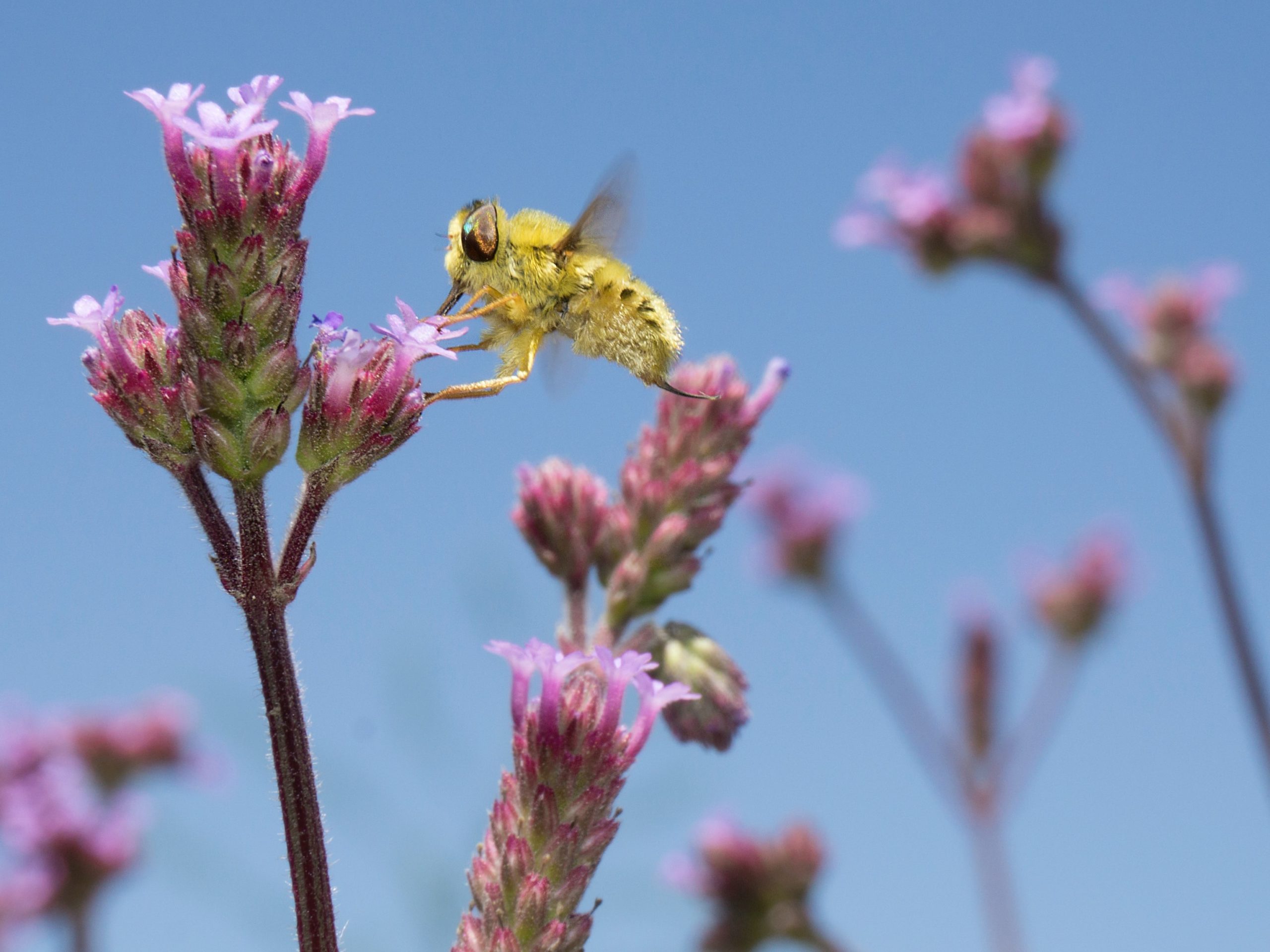
Recently, Netflix released Sir David Attenborough’s newest documentary, A Life On Our Planet, leaving viewers collectively galvanised to make a change. Created in partnership with WWF, the film documents pivotal points in Attenborough’s career, and the changes that have happened to our natural world throughout that time. The documentary came at a good time – 2020 marks the end of the UN Decade of Biodiversity, yet the world has failed to meet a single one of the targets laid out.
Biodiversity was a term that came up again and again in the documentary, as viewers were reminded how biodiversity loss is a huge threat to the planet. In fact, biodiversity loss has been highlighted as 3rd biggest risk to the world both in terms of likelihood and severity this year, ahead of infectious diseases, terror attacks and interstate conflict. Biodiversity is the abundance and variety of life on earth, and humans are entirely dependent on global biodiversity for the air we breath, the food we eat and the water we drink. Almost half of global GDP – around €40 trillion – depends on nature and the services it provides, so its importance cannot be overstated. In Europe alone, biodiversity loss costs the continent around 3% of its GDP each year. The loss of biodiversity has reached unsafe levels across 65% of the world’s land surface – this issue must be brought to the front of global powers’ priorities sooner rather than later.
The recent COVID pandemic has brought to light just how much we rely on biodiversity for our safety and comfort, with scientists positing that the increased incidences of viruses such as Ebola, Bird Flu, Dengue Fever and COVID are exacerbated, if not caused, by biodiversity loss, deforestation and the illegal wildlife trade. In addition, many cures and treatments for such diseases are found or inspired by substances found in the natural world. Without biodiversity, we may lose life-saving treatments for diseases we may not even know about yet. It is important now, more than ever, to understand what it is that causes the loss of biodiversity, and work on bringing it back.
Biodiversity loss is not only an environmental issue, it also impacts upon many of the UN Sustainable Development Goals, including those tacking food security, poverty, peace, justice and development. As stated by Sir Robert Watson, chair of the IPBES, biodiversity is “a security issue in so far as loss of natural resources, especially in developing countries, can lead to conflict. It is an ethical issue because loss of biodiversity hurts the poorest people, further exacerbating an already inequitable world. And it is also a moral issue, because we should not destroy the living planet.”(Guardian, Nov, 2018). Closer to home, biodiversity in green spaces is inextricably linked to mental health and wellbeing for all of us.
The key driver of biodiversity loss is conversion of land from wild space to agricultural or urbanised land. This is not simply due to population growth, but primarily due to overconsumption and overexploitation of natural resources for the existing population, especially in the world’s richest countries. Factors such as climate change also reduce the resilience of ecosystems to these pressures, increasing the likelihood they will not remain in equilibrium, leading to ecological collapse.
The introduction of invasive species (often accidentally through trade and transport) can also unbalance ecosystems, leading to the demise of others within the same ecological niche. Pollution is the final major cause of biodiversity loss.
Many of these reasons are linked, as they are all to do with the expansion of humanity into all realms of our planet, coupled with the desire for development, growth and increased consumption, often at the cost of the natural world.

Half of Earth’s habitable land is taken up for agricultural use, 77% of which is used for grazing livestock. However, while livestock take up most agricultural land, they only provide 18% of the world’s calories, and 37% of total protein, suggesting this is an inefficient use of space – it takes considerably more land and water to raise cattle (and indeed any animal for human consumption) than to grow almost any vegetable. The exact figures vary vastly depending on the production system, e.g. feedlot vs grass-fed.
Either way, of the 28,000 species threatened with extinction, 24,000 have agriculture listed as a key reason for their demise. Even land that is left for arable farming is used to feed the vast number of livestock we raise – over a third of all crops grown are used to feed livestock rather than humans, and only 55% of the world’s crop calories are directly eaten by people. This is another example to show that population growth is not an issue in and of itself – it is the way we choose to use resources (especially in richer countries) that is problematic

One thing lacking from the Attenborough documentary was a strong call to action. For many viewers, the issues were clearly laid out, but lacked tangible action points. Many watching the documentary will be the greatest contributors to global biodiversity loss – people in rich countries consume up to 10 times more natural resources than those in the poorest countries. And yet, the negative impacts of this are most keenly felt in the poorest countries themselves, once again leading to an environmental justice issue where those least contributing to the problem are those most affected by it, maintaining global inequalities in wealth and quality of life.
CHANGE YOUR DIET
Projections suggest that without increasing the land we currently farm, we have enough food to feed an extra 4 billion people, provided we grow food primarily for direct human consumption, rather than feeling the world’s 70 billion livestock. By choosing a more plant-based diet, we can collectively reduce the amount of land needed to feed livestock globally, allowing more food to be used for direct human consumption. In the UK, we eat almost double the world average meat consumption per capita, and two times the protein we actually need, so there is room for a decrease in meat consumption both from an environmental and a health-based point of view. There are some suggestions that a flexiterian/plant-based diet with some animal products in may be more beneficial for the environment than a purely vegan diet (dependent on a number of factors), but what is widely accepted is that in the global north we should all be reducing out meat and dairy consumption, and buying better quality, more ethically and sustainably raised animal-based foods when we do eat them.
VOTE, SIGN PETITIONS & LOBBY GOVERNMENTS
Currently, most countries signed up to the Paris Agreement are on track to miss most or all of the targets laid out. Unfortunately, it seems all too easy for governments to prioritise growth and expansion under capitalism than more sustainable long-term goals, such as increasing biodiversity and taxing unsustainable business practises. Alone, we can choose to live as sustainably as we can, but we will never be able to make the change we need without voting in governments who prioritise our environment both within the country and via collaboration across borders. By voting for governments that will prioritise long-term solutions to our biodiversity crisis and lobbying the government we have, we have a chance to make a real change, both close to home and further afield.
BUY FROM SUSTAINABLE SOURCES
There are so many accreditations that claim to certify the sustainability of the clothes we wear, goods we buy and food we eat that it can be hard to know what is reliable and what is not. However, keeping an eye out for accreditations that guarantee the source and cultivation method of a particular object (with the knowledge that they are not infallible) can help you make better decisions when it comes to shopping. Aiming to buy only products that you need and that are sustainably sourced can help lower your environmental impact. Goods such as coffee, woodenfurniture and cotton have vast differences in their biodiversity and environmental impact depending on their growing conditions, so ensure you’re buying ethically and sustainably sourced versions, and only when you need to.
DONATE
It’s tough to keep track of environmental injustices and governmental mishaps, but by donating to charities and NGOs that have made it their mission to maintain and improve biodiversity in the natural world, you can play a small part in financing the positive steps made possibly by the work of many non-profits. There are plenty of charities to choose from, and each will have its role. Find one that aligns in what you believe is highest priority and if you are able, set up a monthly donation.
There are so many ways in which we can help improve biodiversity at home, within the country and even globally, but it can often feel overwhelming and like a small drop in the ocean compared to the work that really needs to be done. Unfortunately, while global powers prioritise profits over all else, saving the world’s biodiversity is sure to be an uphill battle, but we can only do what we can do. Use your voice, share articles, papers, charities, petitions, vote for who you believe in and we may yet be able to make a change.

With so many articles on the subject, sometimes it can feel overwhelming to think about how to have the biggest impact.
A country’s climate footprint is loosely defined as the amount of resources it uses, including the amount of greenhouse gas emissions caused by that country. Their carbon footprint, specifically the amount of carbon dioxide released, is often broken down into per capita consumption to see how much each individual is emitting, as obviously larger countries with more people will have a larger footprint if looking as the country as a whole.
If you are reading this piece, you’ll likely have a higher carbon footprint than most of the rest of the world. The UK’s average carbon output per capita is 5.62T, the US is 16.56T and Australia has the highest in the world, at around 17T. For comparison, the global average is around 4.8T (2017). In just under 2.5 days the average American or Australian emits as much as the average Malian or Nigerian does in a year. In order to avoid the worst consequences of climate change, we must reach ‘net zero’ carbon emissions by 2050. The UK became the first major economy in the world to pass a law committing itself to this target. So far the government has fully achieved only 2 out of the 31 milestones set.
An individual’s carbon footprint is not the sole measure of their climate impact however. Their use of resources, such as consuming clothes, food, plastic etc., has an impact of its own. Behaviours such as recycling have a small impact on carbon emissions, but a much larger impact on reducing waste and conserving resources, which is why they are so important.
Tackling the climate crisis requires a multifaceted approach. Thankfully, we have the information and technologies we need to make a real difference, we just need to implement them in order to prevent more irreversible damage. Much of this can be helped through individual action, but the role of governments and cross-border cooperation such as the Paris Agreement in implementing larger-scale policies cannot be downplayed.
Below are some great steps you can take as an individual to make a real impact on our future.
SWITCH TO A GREEN ENERGY PROVIDER
One of the reasons the UK’s per capita carbon footprint is lower than many comparable countries around the world, is because a much larger proportion of energy produced in the UK is from renewable resources. Switching to a green energy provider not only reduces your carbon footprint, but also allows these companies to expand. The more money we put into green energy globally, the better. As we move into autumn, it’s the perfect time to move over to an energy provider that is not only better for the planet but also potentially better for your wallet too. The UK’s favourites are Bulb and Octopus Energy. The great thing about switching is that once it’s done, other than being sensible about energy usage, it’s not something you have to think about every day, unlike some other lifestyle choices. Switching energy provider takes about 5 minutes, and once it’s done, it’s done!

SWITCH TO AN ETHICAL BANK
While many people focus a lot of energy on how they spend their money, aiming to be as sustainable as possible, not many people think about how their money in the bank is being invested. A report was released in 2018 suggesting that the ‘big 5’ UK banks (Barclays, HSBC, Lloyds, RBS and Santander) are hindering our efforts to tackle climate change. The report shared that in 2019 alone, banks invested $736 billion in fossil fuels. They also provide financing for companies that exploit natural resources unsustainably, fund tobacco, nuclear weapons and practices such as fracking. By switching to an ethical bank you can remove your money from these investments, instead placing it into projects that make a positive environmental and social impact on the planet. Moving your money to an ethical bank places pressure on mainstream banks to follow suit and clean up their game. If you don’t want to change bank, at least ensure that any investments you make are not funding the fossil fuel industry. Many banks now have ‘ethical investment’ portfolios.
REDUCE, RE-USE
Before we come onto recycling, it is important to remember that reducing consumption and reusing items is absolutely vital if we are to protect the environment. Simply buying second hand and items made from recycled materials, reusing what we already have and passing on unwanted belongings to friends, family and charity shops can significantly reduce the impact those items have on the planet. Reducing consumption is probably the most important of ‘reduce, reuse, recycle’ – we cannot live in a world where we continue to consume unrenewable resources at the rate we currently do. Before buying something, consider whether you really need it. This is especially important with clothes. If the fashion industry were a country, its emissions would rank almost as highly as the entirety of Europe, and the average item of clothing in the UK has a lifespan of just 2.2 years before being thrown out. Extending this lifespan by just three months would lead to a 5-10% reduction in their carbon, water and waste footprints, and cut resource costs by £2bn. As an incredibly unsustainable industry, it is important we buy only what we need, and ensure that items remain in circulation for as long as possible, before being recycled at the end of their lives. For household goods, aim to purchase refillable options to reduce packaging. Reuse items as long as possible – a glass jar used just twice has half the impact per use than one used just once and then recycled. Only if an item cannot be reused should it be recycled.

RECYLE
Recycling is something taught at many schools, and yet as adults, we seem incapable of remembering to do it on a mass scale. Part of this is because the recycling systems in place in the UK are outdated and often difficult to understand. However, it is still vitally important. The energy saved from recycling one glass bottle is enough to power a lightbulb for four hours. Recycling a plastic bottle would power a bulb for up to six hours, as it takes significantly less energy to create new bottles from recycled materials. Not only does this save energy, it also saves valuable resources, too. All the oil, water and other resources used to make an object are wasted if that product isn’t recycled. Keep the loop closed and minimise landfill waste by recycling everything you can.
VOTE
While these are all great ways to reduce your individual impact, there is without a doubt the need for systemic change. Without voting for parties who you feel will tackle the climate crisis head on, it is hard to believe that individual chance will be enough to lead to global improvements. However much we reduce the amount we drive, change what we eat and take fewer flights, so long as governmental regulations allow for unsustainable practices in industry, it will be extremely difficult, if not impossible to reverse the impact we have had on this planet. Voting is one of the most important things we can all do to reduce the country’s climate footprint.
There are many more things we could and should be doing to reduce our climate footprint, from flying and driving less to switching to a plant-based diet.
The above suggestions are just the start, but can make a great impact with relatively little effort. Individual action counts!
“Use your voice, use your vote, use your choice” – Al Gore.